Once the heart of Chicago’s Nord Seite, Lakeview was crowded with German joints like Math Igler’s Casino. Not that kind of casino, though–Igler’s was sauerbraten and singing waiters rather than slots. With ethnic German identity on the decline in the US and Lakeview’s community dispersing into a hundred different suburbs, the restaurant closed in the late 1980s. The diverging fates of the Citizens State Bank building next door and Math Igler’s Casino illustrate the two main options for vacant and obsolete buildings in the late 20th century–loft condo conversion for the old bank, demolition for the old restaurant.

Razing a building for a parking lot always sucks–especially when it’s a five minute walk from a Brown Line station and two of the city’s busiest bus lines–but in this case by sacrificing the Igler building the City of Chicago has (unintentionally) assembled itself a hefty little site when coupled with the adjacent Lincoln Belmont Branch Library and its parking lot. This would be a perfect place to build one of those awesome library/affordable housing hybrid developments like the Independence, Northtown, or Little Italy library branches. Hopefully, in the future we can say that Math Igler’s Casino died so the Lincoln Belmont Branch Library & Melrose Apartments could live. Unfortunately, the city contracted out the operation of this lot to a private company...so it would likely be deep in the future.

So, what’s changed? I don’t even really need to ask this. Three things, and they’re obvious. Math Igler’s Casino is sitting in a landfill somewhere, the Citizens State Bank building sprouted a penthouse during its condo conversion (...along with a whole new glass facade on the Lincoln Avenue side), and the Wieboldt’s annex in the background, the home appliance section of the department store, was demolished and eventually replaced with a shitty little Bank of America taxpayer branch.
The building housing Math Igler’s Casino was built in 1914, designed by Theodore Anderson (...who I couldn't dig up a single thing about). Known as Schmidt’s Cafe, then the Melrose Grill, it catered to a neighborhood crowd–the proprietors regularly placed German-language help wanted ads in the Abendpost, Chicago’s largest German-language daily. Matthias Igler, an Austrian immigrant, took over the restaurant in 1923. Apparently operating as a speakeasy as well as a restaurant, it survived prohibition–although a police raid confiscated a wildcat beer brewing system in 1927–and then a fire in 1940.

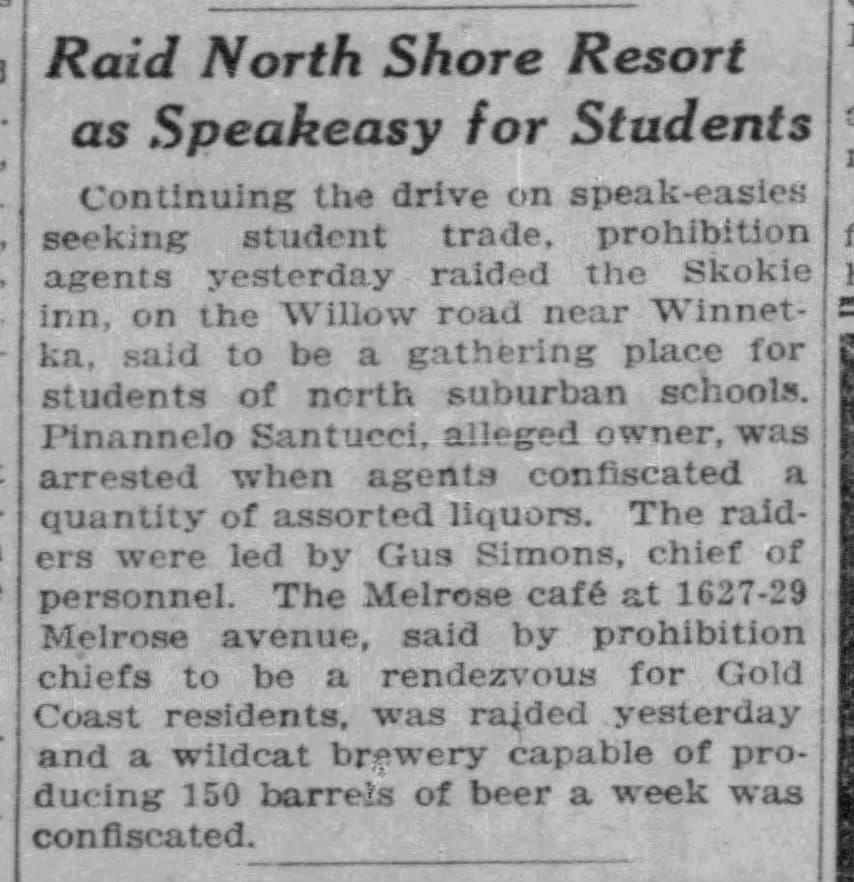

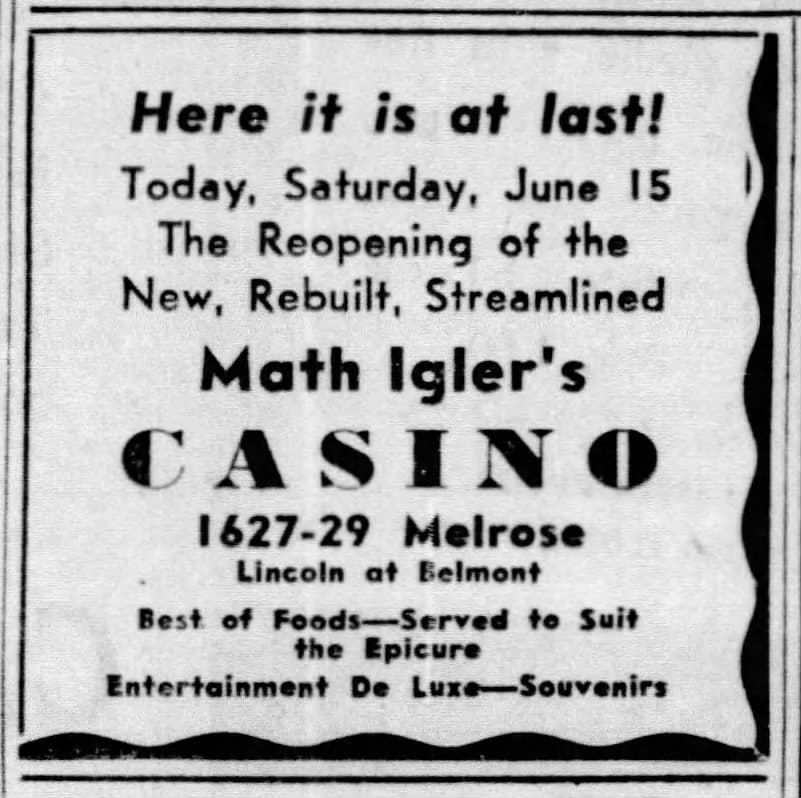
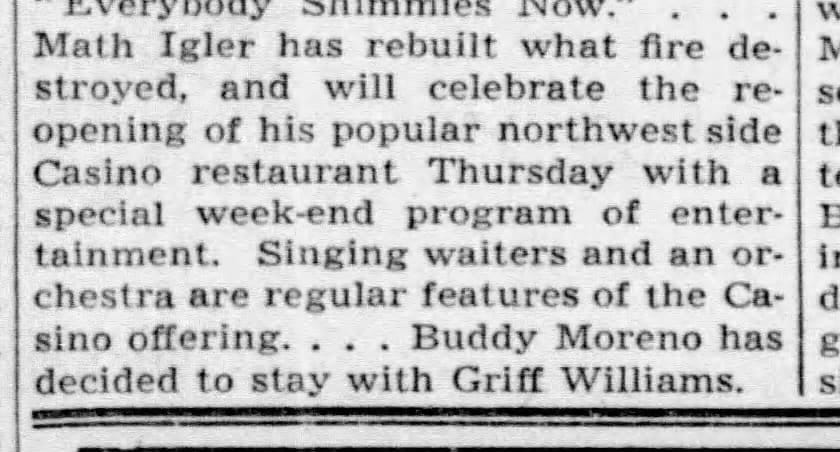
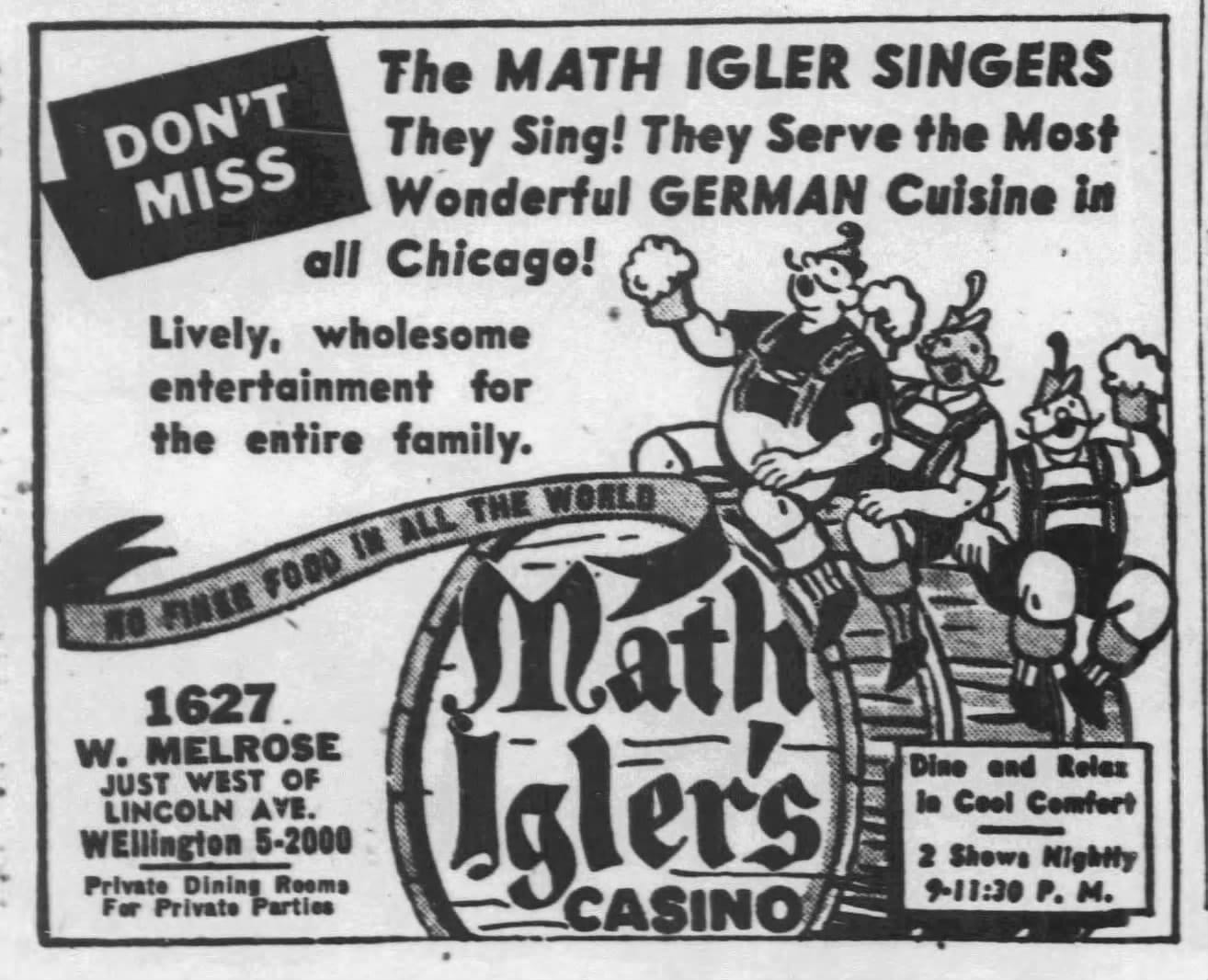
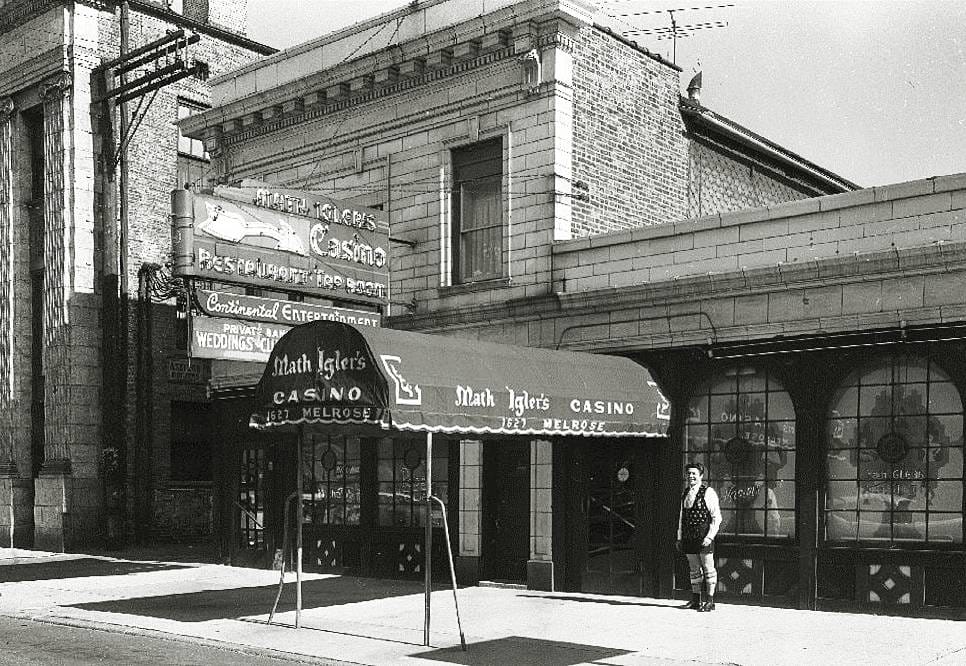
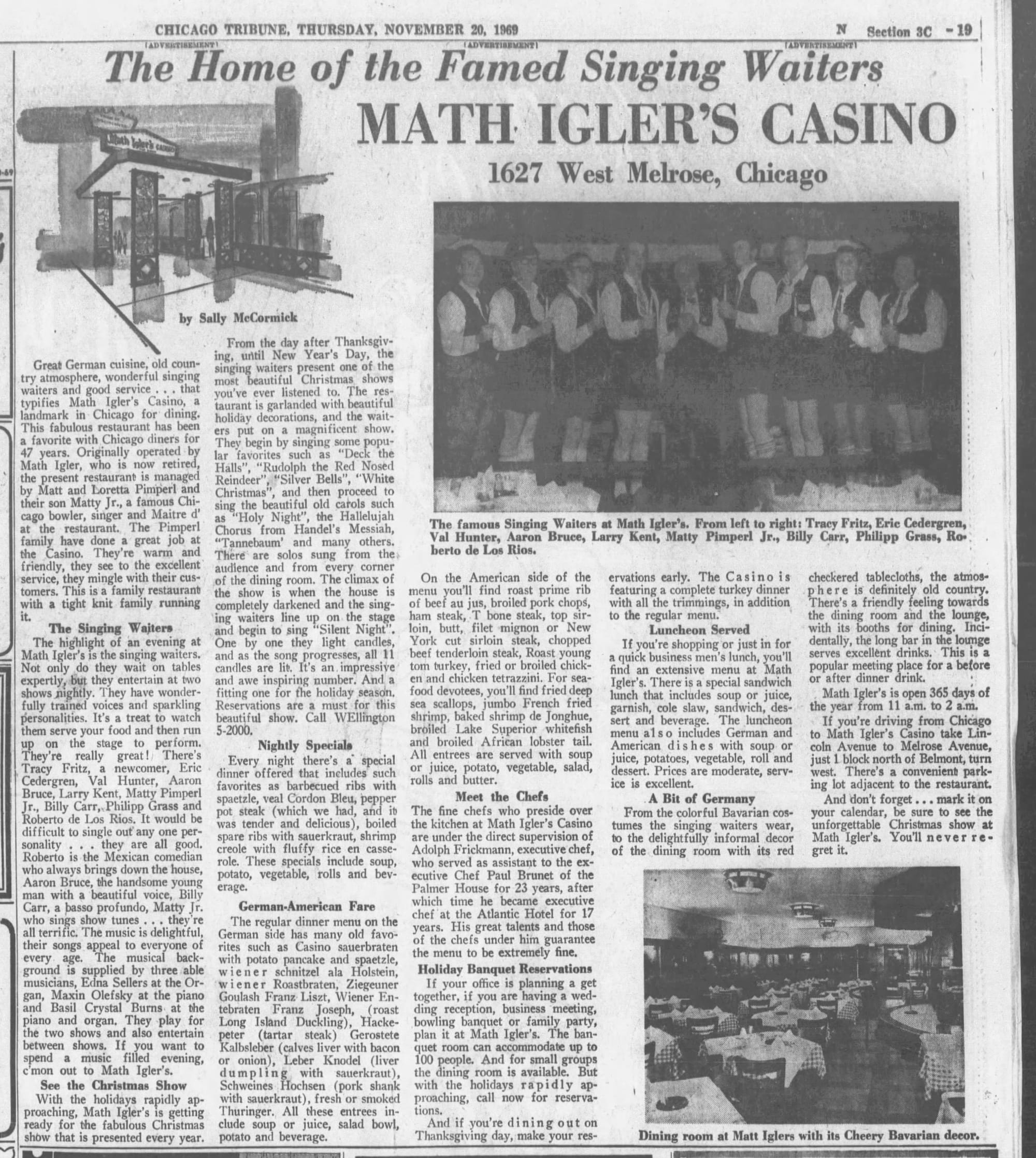
1915 help wanted ad for a short-order cook, Abendpost, the Internet Archive | 1927 article on a raid of the Melrose Cafe speakeasy | 1938 help wanted ad for a German-speaking waiter | 1940 article and ad on the rebuilding and reopening of the restaurant after a fire | 1953 ad | 1958 photo, Chuckman Collection | 1969 ad
Renamed for its proprietor, a rebuilt Math Igler’s reopened in 1940. Math sold to his nephew, Matt Pimperl Sr., in 1952. Over its roughly 45 year run, Math Igler’s Casino would come to be known for its lederhosen-clad singing waiters (one of whom was Matt Pimperl, Jr., who’d carve out a fairly successful career as a vocalist).
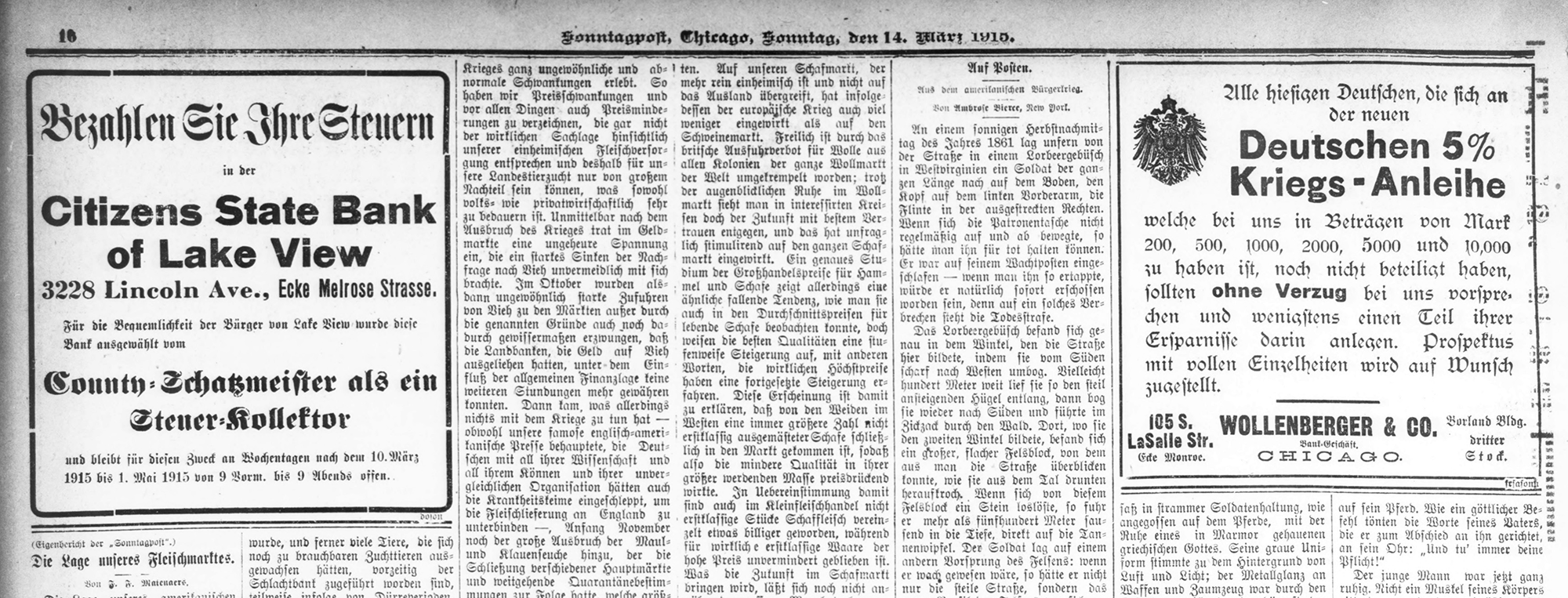
You could argue that German influence in Chicago peaked the year this building went up–1914. The First World War unleashed a wave of anti-German sentiment in the US, with the Chicago Tribune calling the Abendpost the “Chicago Hun-tongued newspaper”. A divide widened between those who wanted to assimilate and those who felt an allegiance to the old country. The Abendpost itself was publishing ads for German War Bonds in 1915 (which I found pretty shocking). Anti-German sentiment intensified with the US entry into the war, crushing German-language education and media. Even mundane bits of Germanic influence were removed, with Chicago’s Lubeck, Frankfort, and Hamburg Streets renamed Dickens, Charleston, and Shakespeare. Even after all that, more than 20% of city residents still identified as German in 1920, with Lakeview the biggest enclave–an enclave served by Math Igler’s.
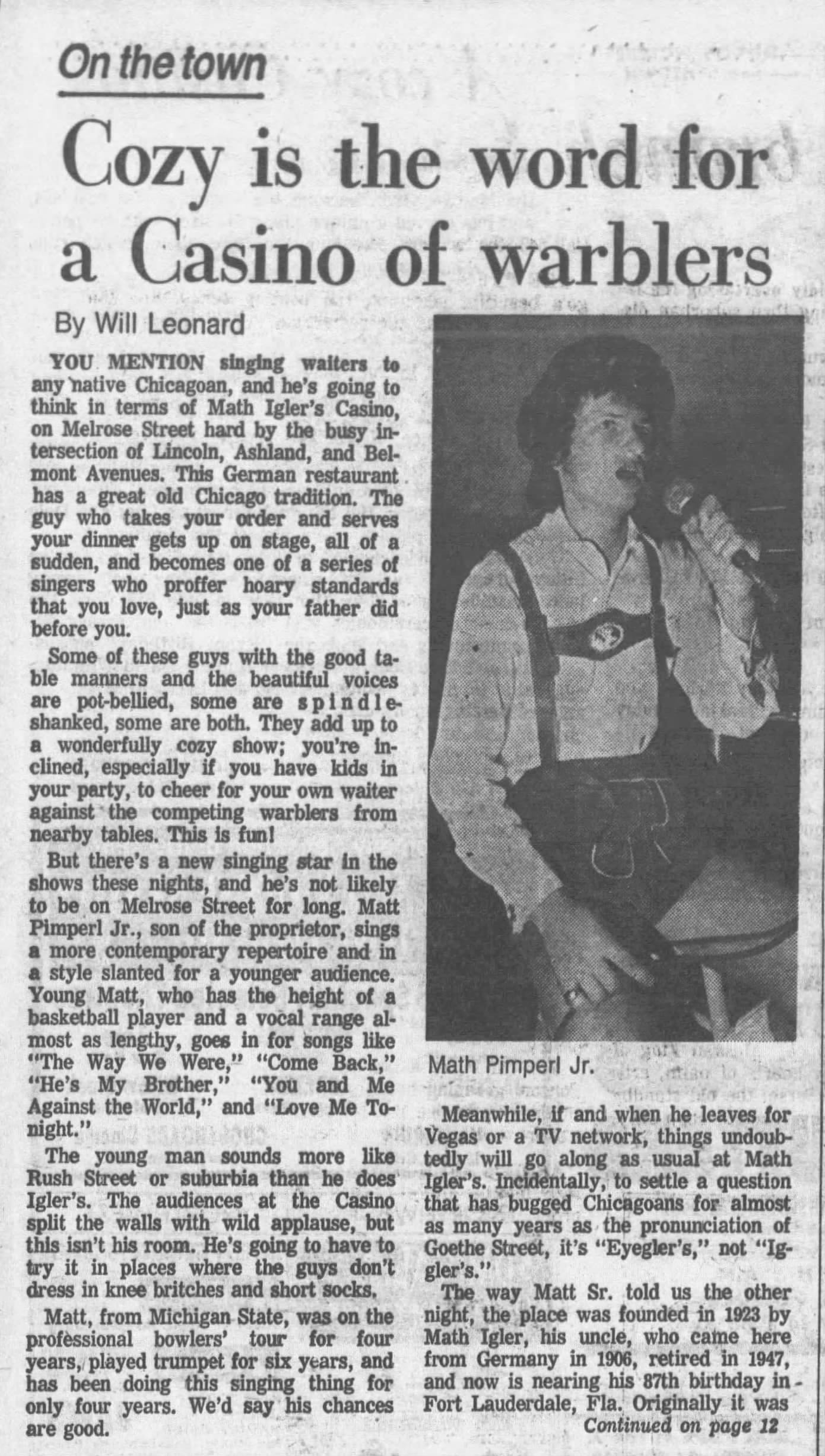
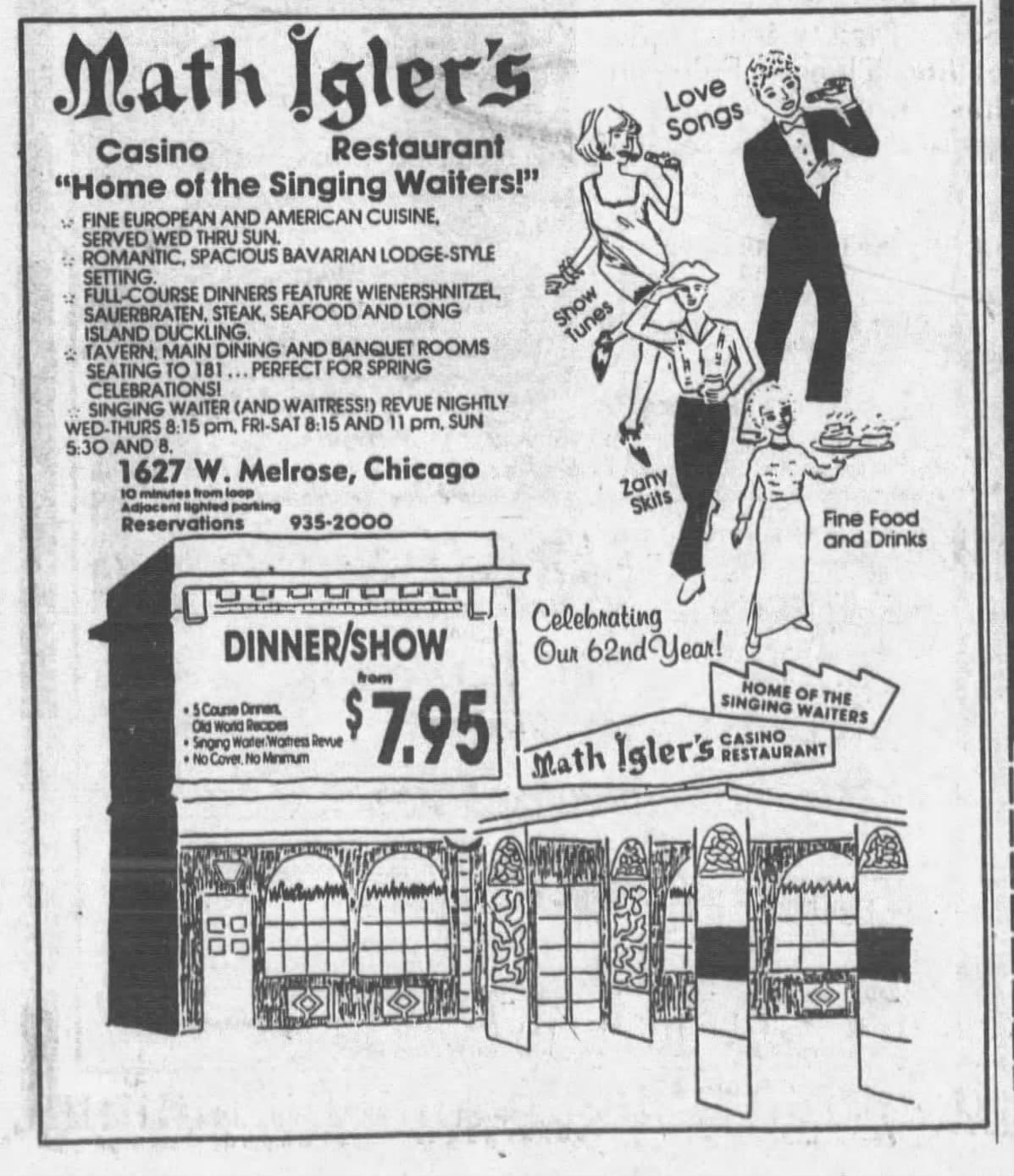
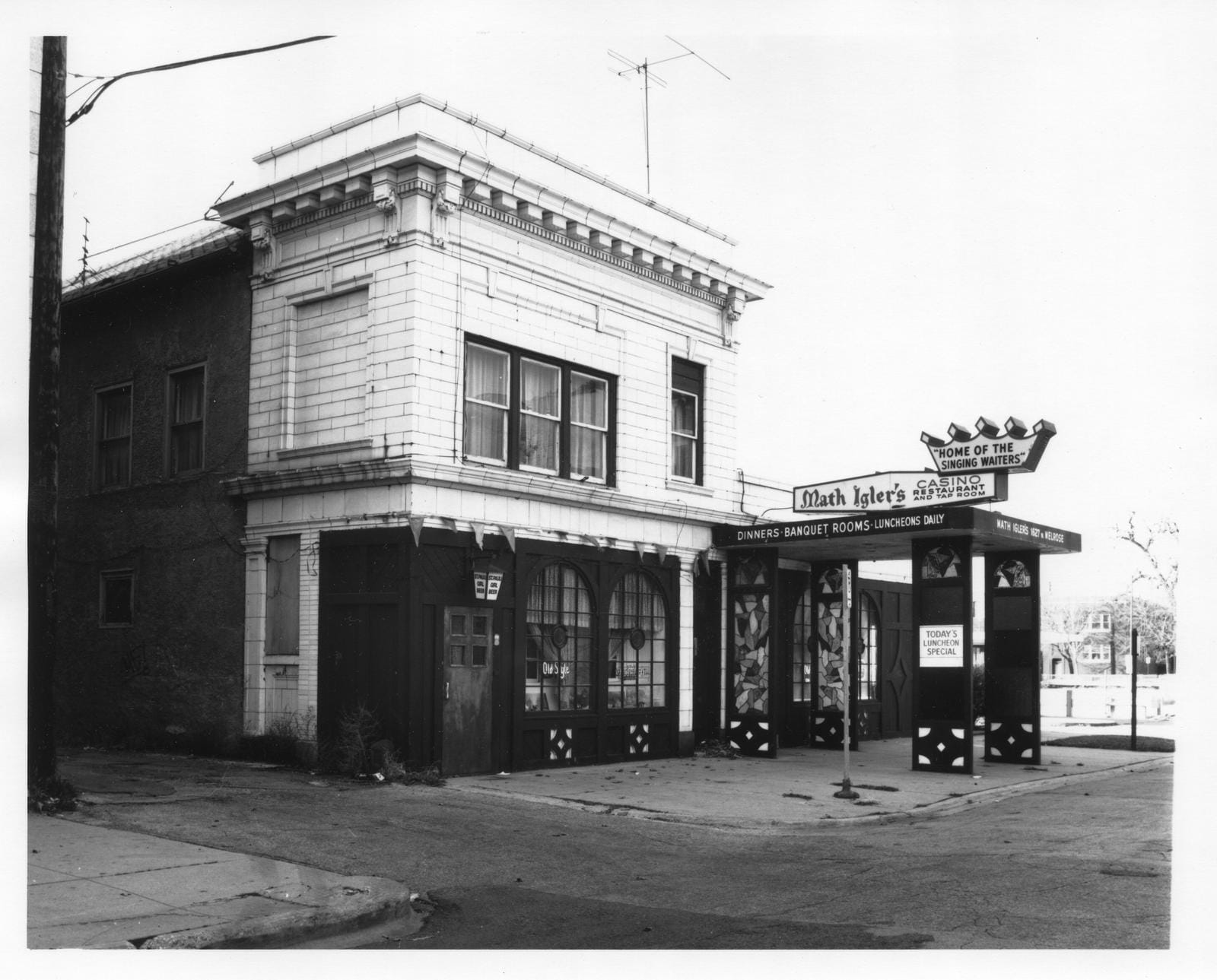
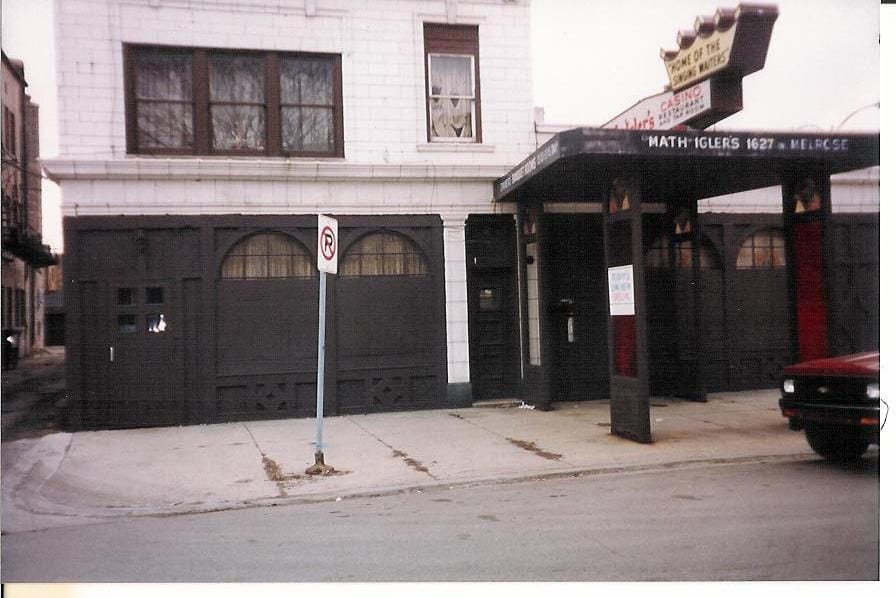
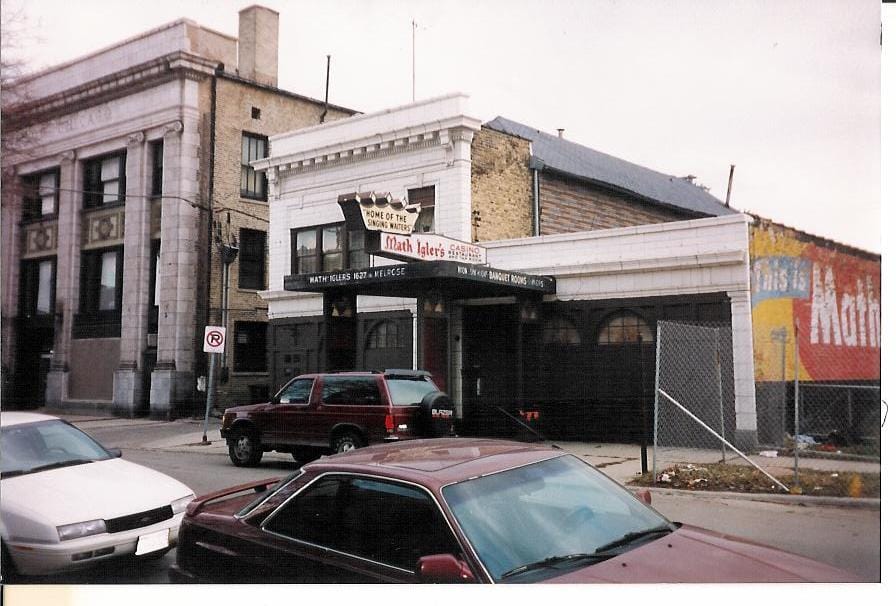
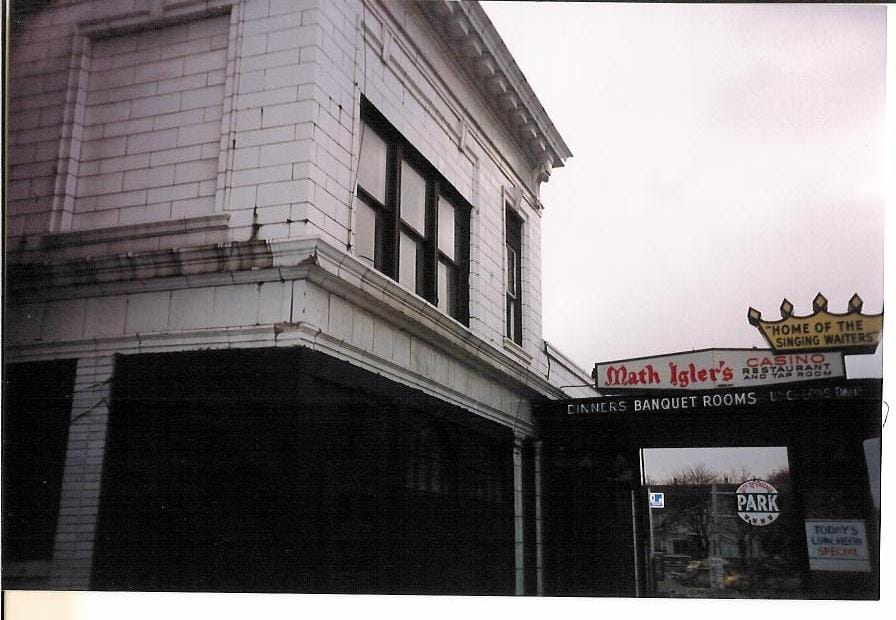
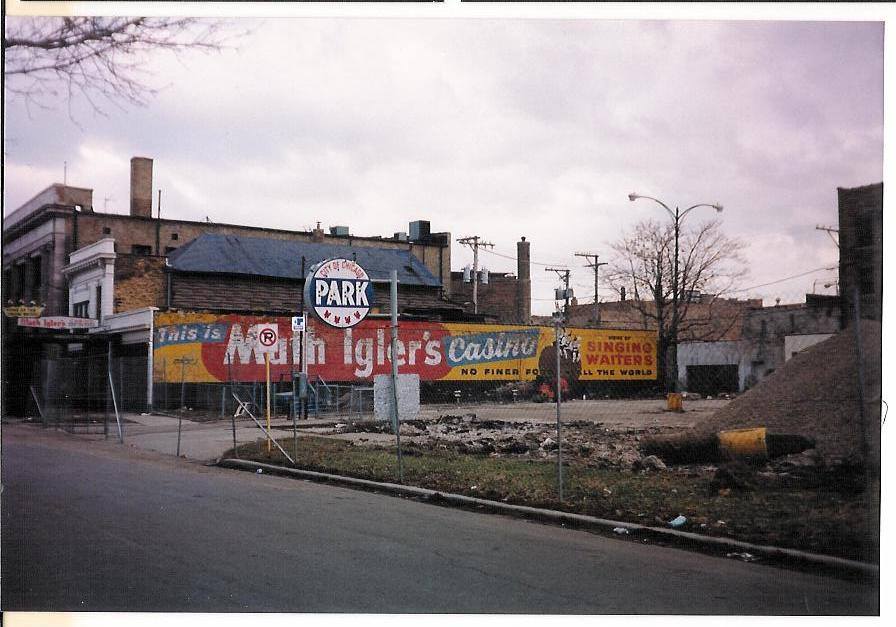
1975 article about the singing waiters | 1985 ad | 1987 photo, Robert W. Krueger, Chicago Public Library via Chicago Collections | Ca. 1993 photos, WayOutWardell, Flickr
Germany’s aggression during the Second World War and the shame of the Holocaust further fractured German-American identity. Assimilation and the suburbs then shrunk what was left of a coherent Chicago German community, and by the 1970s and 1980s Lakeview’s position as the heart of German Chicago had faded. Some of the old German joints hung on–Zum Deutschen Eck, Heidelberger Fass, along with Math Igler’s–but this stretch of Lincoln Avenue was down on its luck. Mirroring that decline, sometime between 1985 and 1990, Math Igler’s Casino closed. Vacant for years, the city acquired the building and demolished it for a city-owned parking lot.
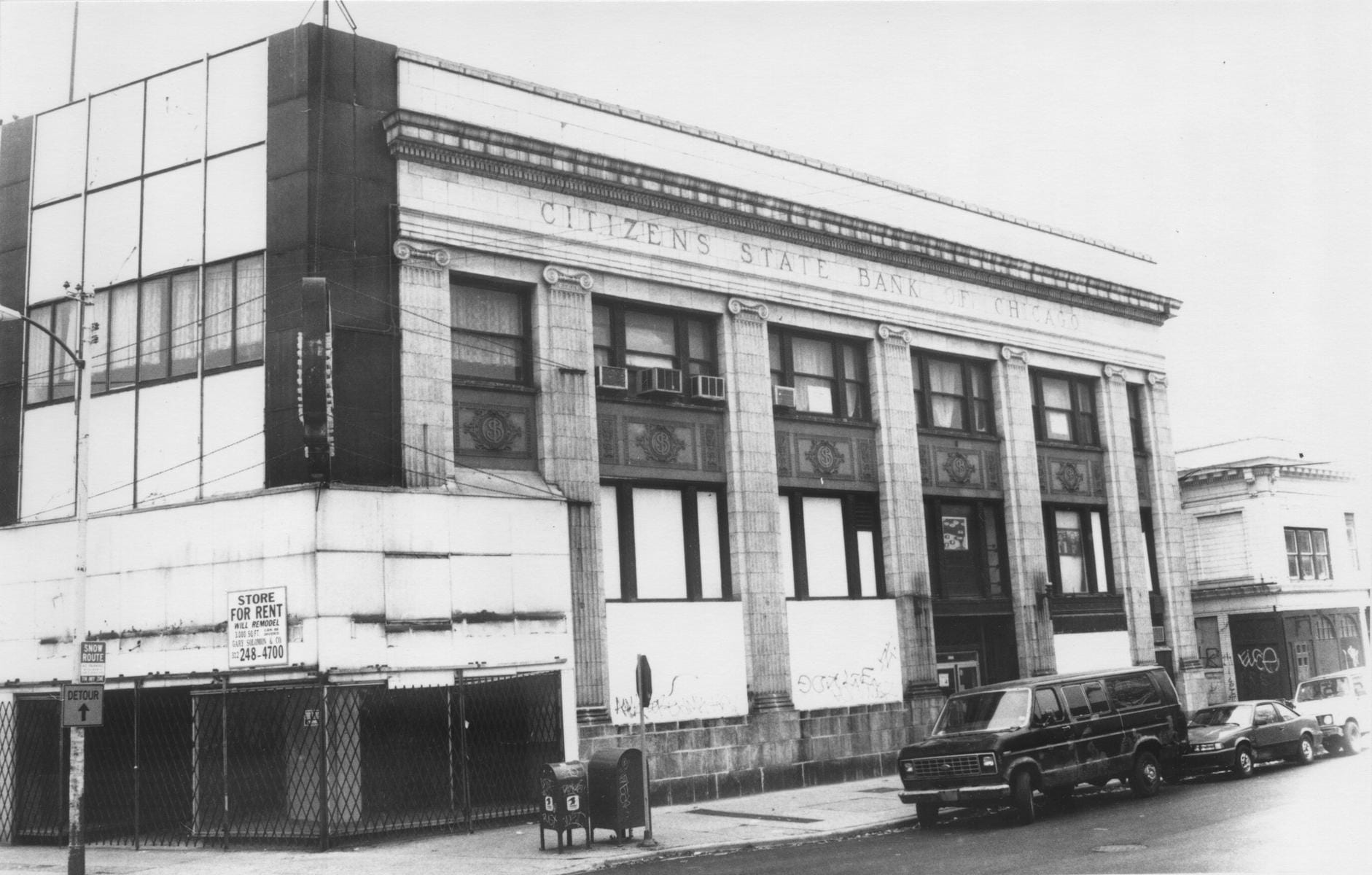
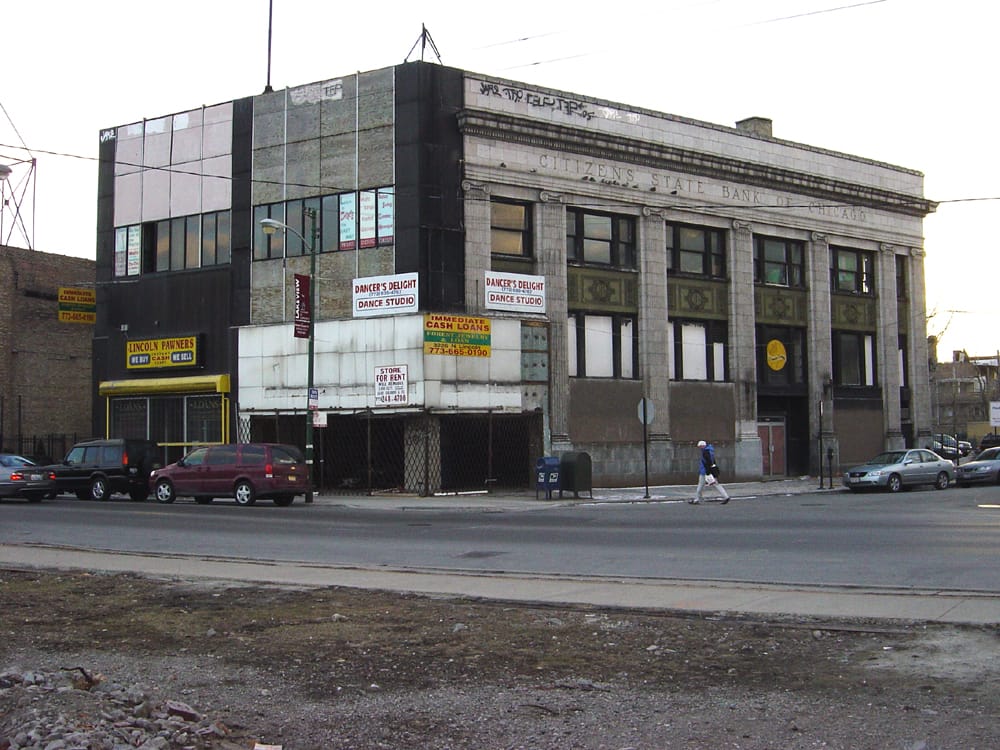
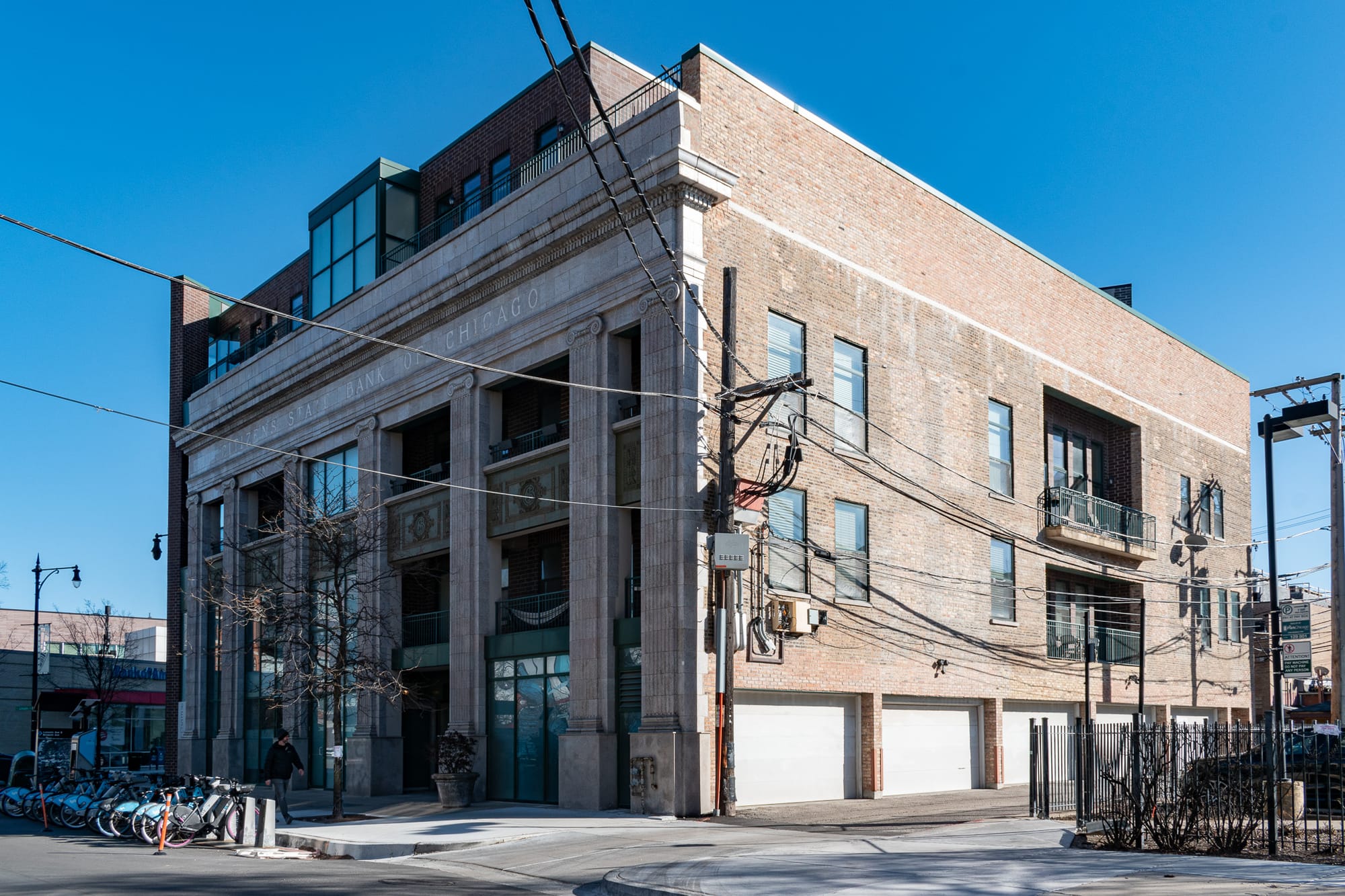
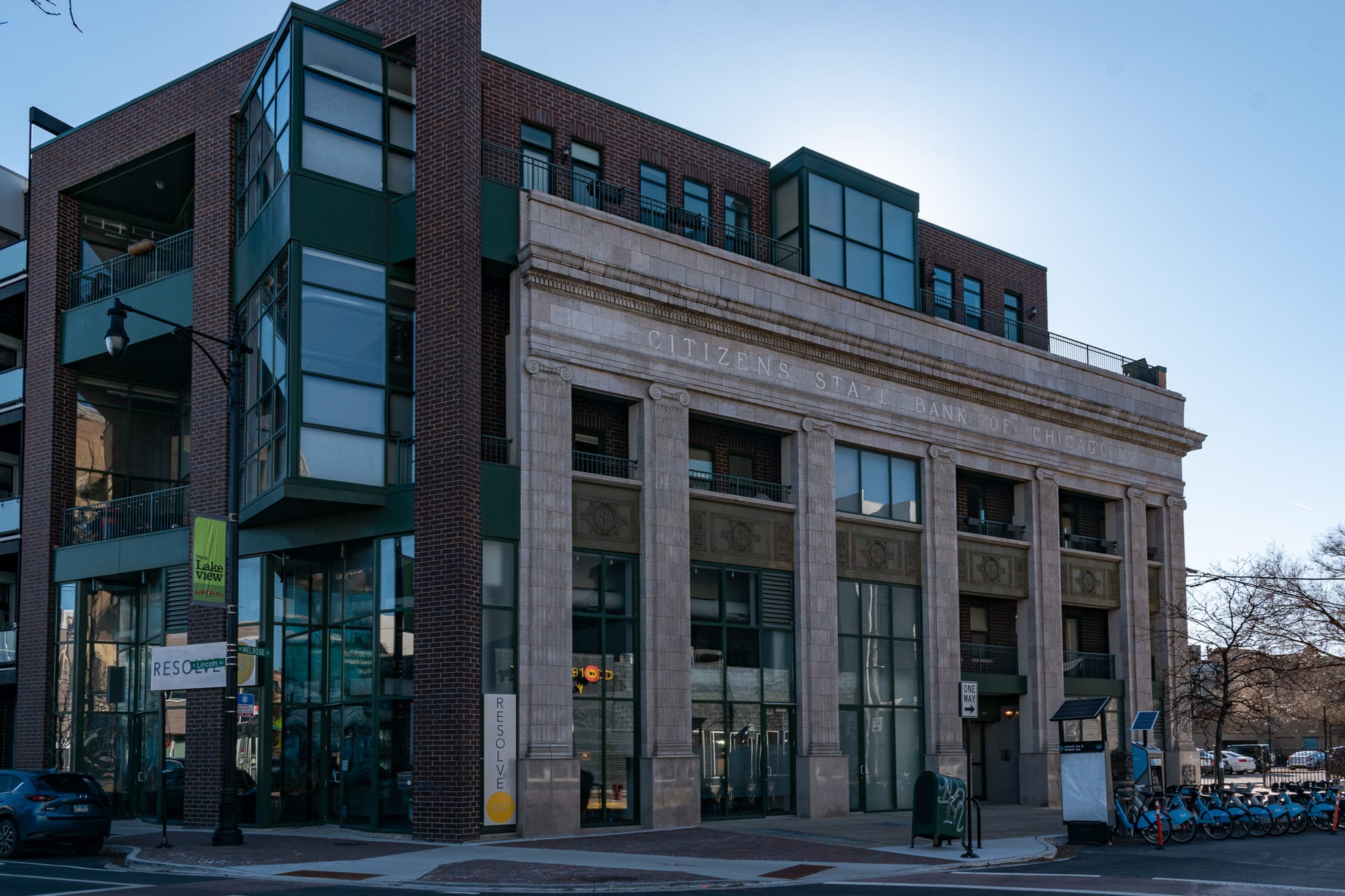
1995, Robert W. Krueger, Chicago Public Library via Chicago Collections | early 2000s | 2024
If you weren't going to demolish a vacant old building in the 1990s or early 2000s, you were going to turn it into condos. Especially banks–man, people go wild for pompous neoclassical banks.
In this case, it was the Citizens State Bank of Chicago, built in 1921. Founded as the Citizens State Bank of Lake View in 1913, their first location was on the corner here, but the fast-growing neighborhood bank bought the lots next door and hired architect Henry L. Newhouse to build them something bigger that better conveyed solidity and strength.
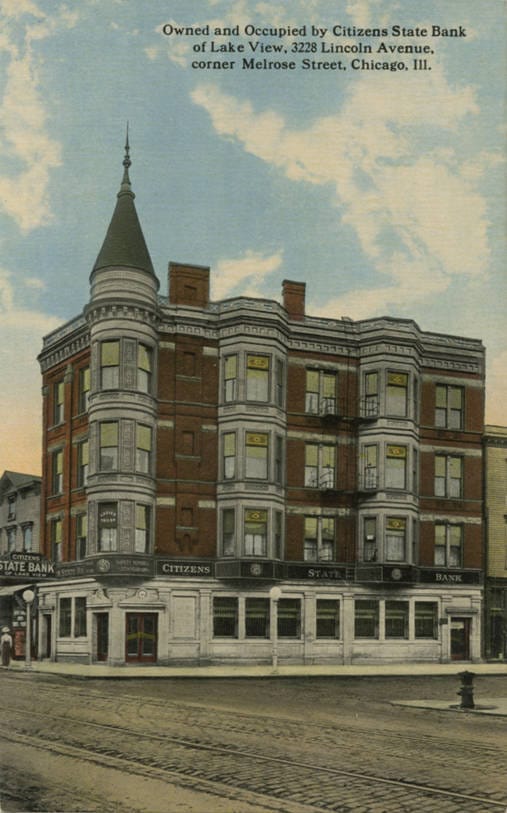
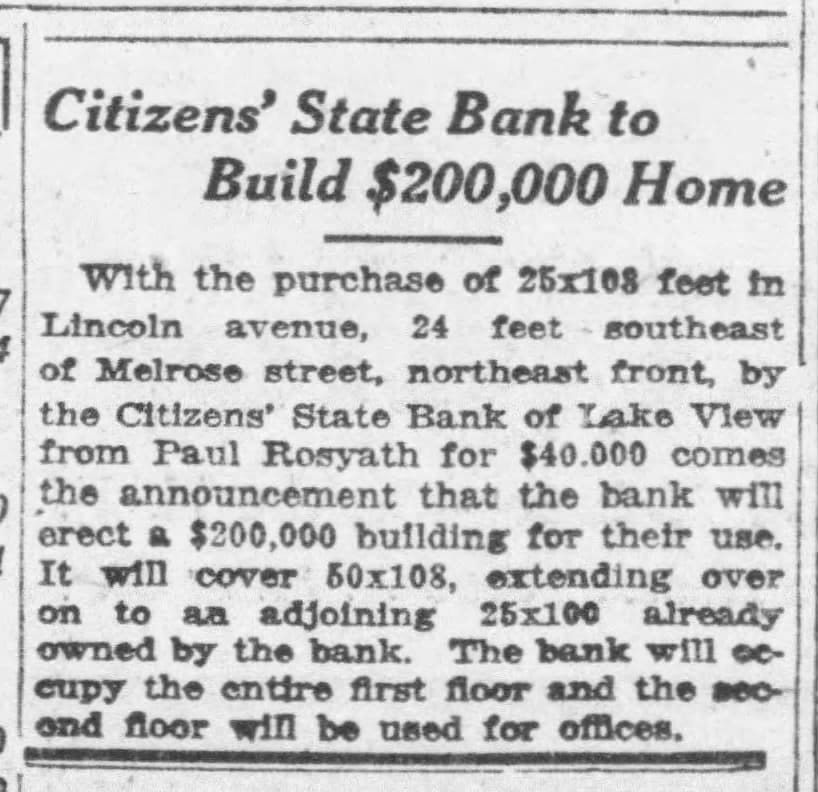
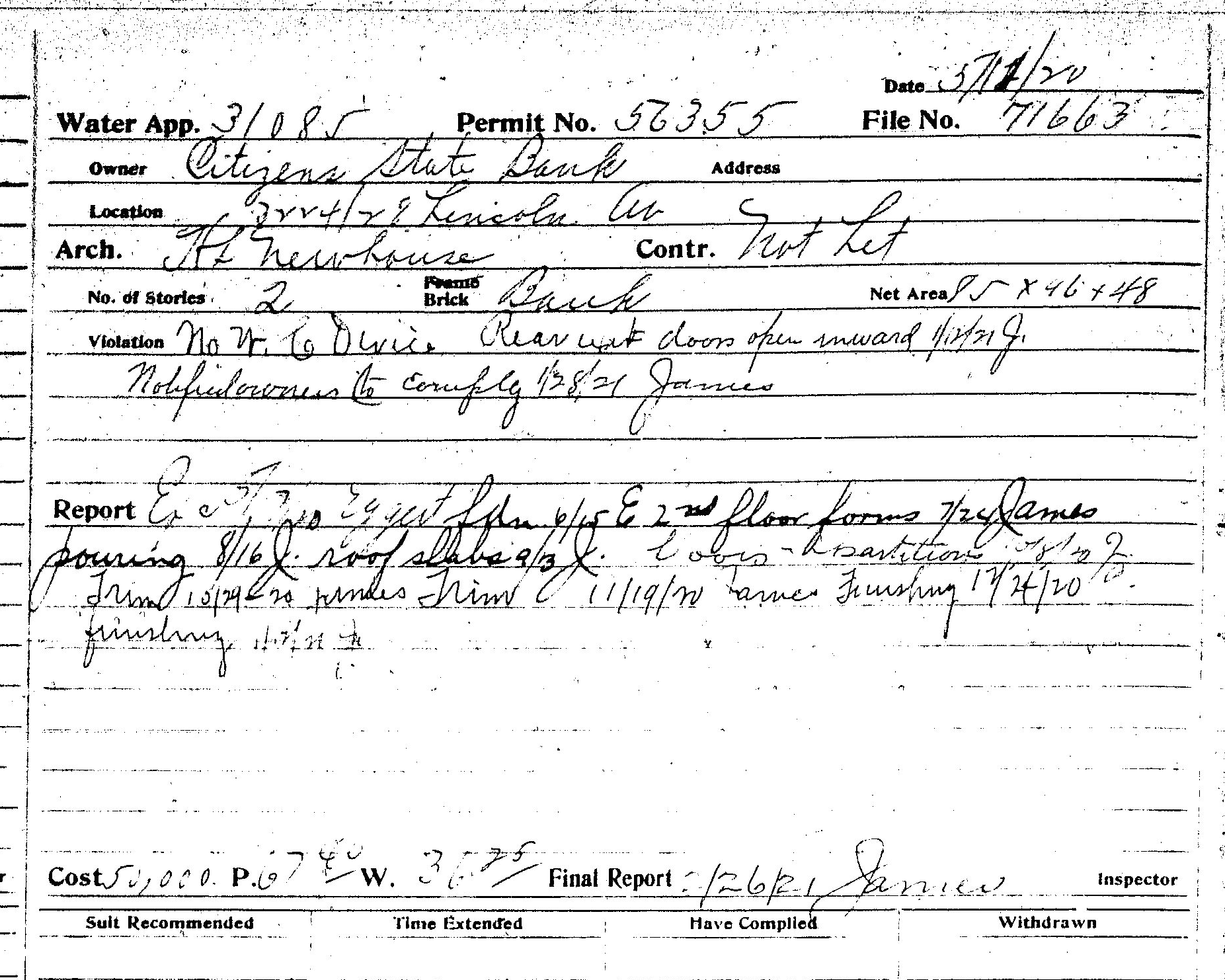
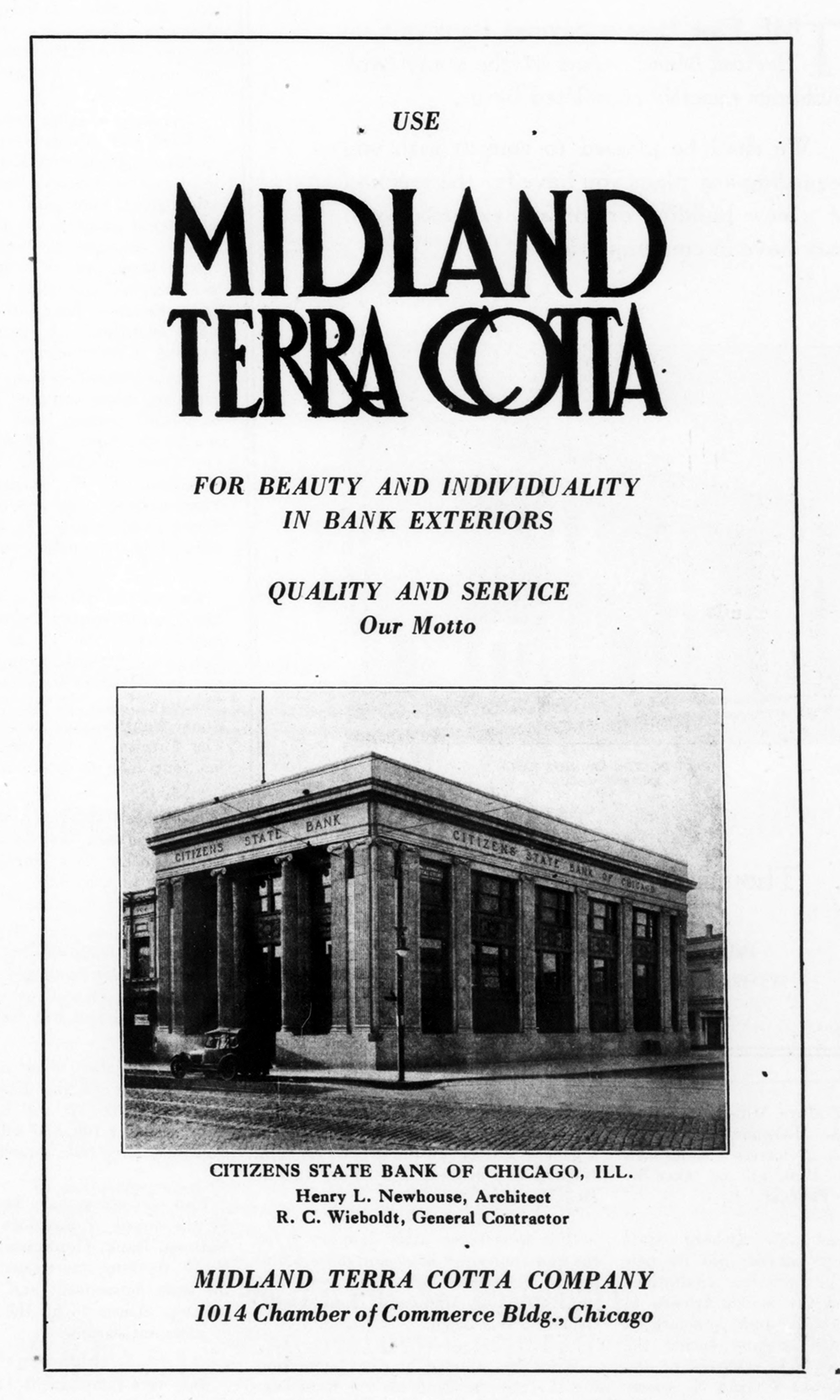
The previous building that stood on the corner of Lincoln & Melrose, the initial home of Citizens State Bank, Newberry Library via Wikimedia Commons | 1919 article on their plans to build a new building on an expanded site | 1920 building permit, Chicago Building Permits Digital Collection, UIC | In a Midland Terra Cotta ad, 1921, Bankers Monthly, the Internet Archive
Working from the late 1890s to the mid-1920s, Henry L. Newhouse designed a bunch of tidy mansions and apartments, mostly on the South Side, as well as several theaters. He also designed a handful of excellent synagogues–I’m particularly into the former Congregation Bickur Cholim in South Chicago, a wonderful little mid-block Romanesque synagogue that I was delighted to see is still standing (it’s now the Christ LIFE Church Chicago). The former Kenwood National Bank, another Newhouse-designed bank built around the same time as Citizens State, also makes heavy use of terracotta.
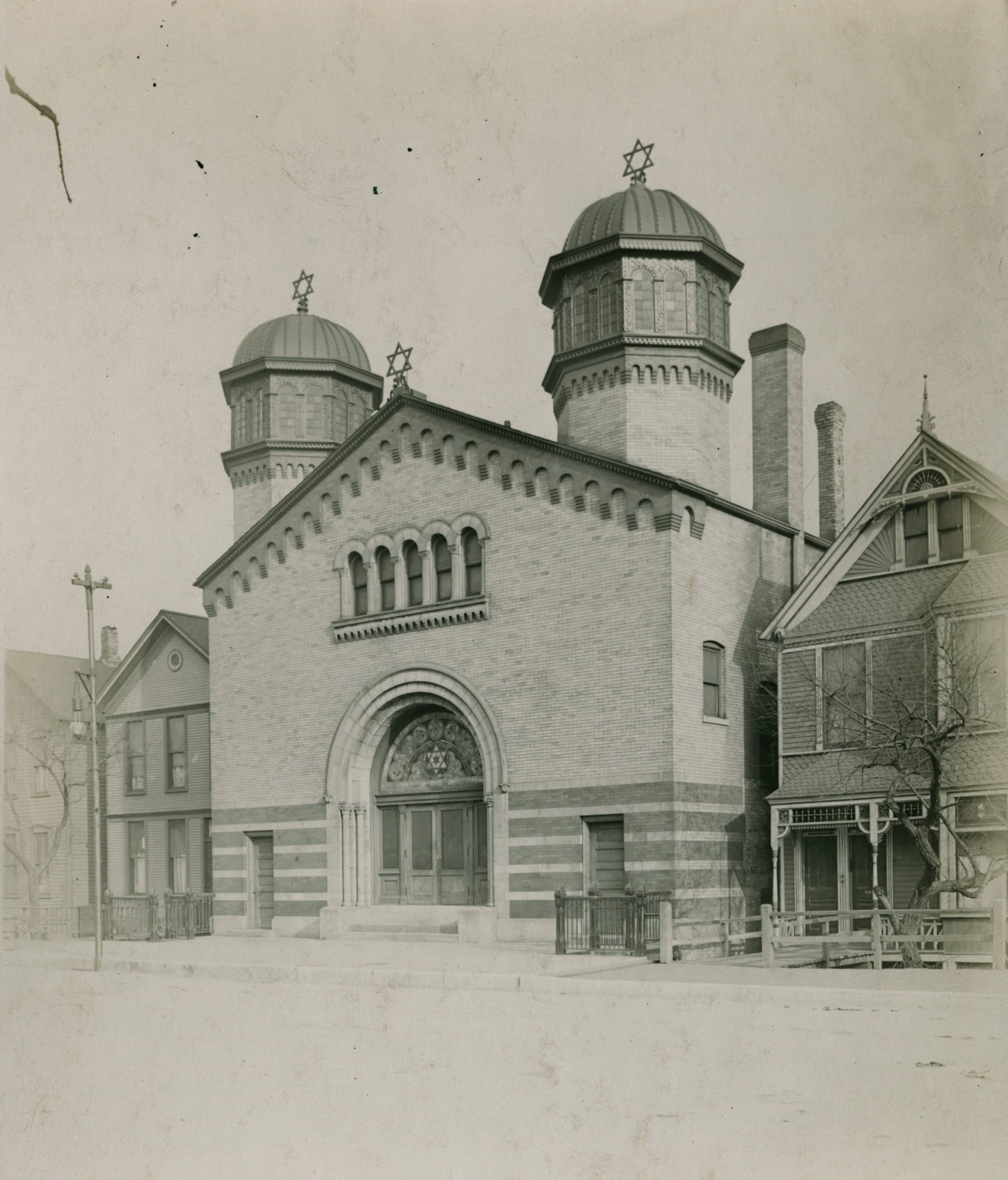
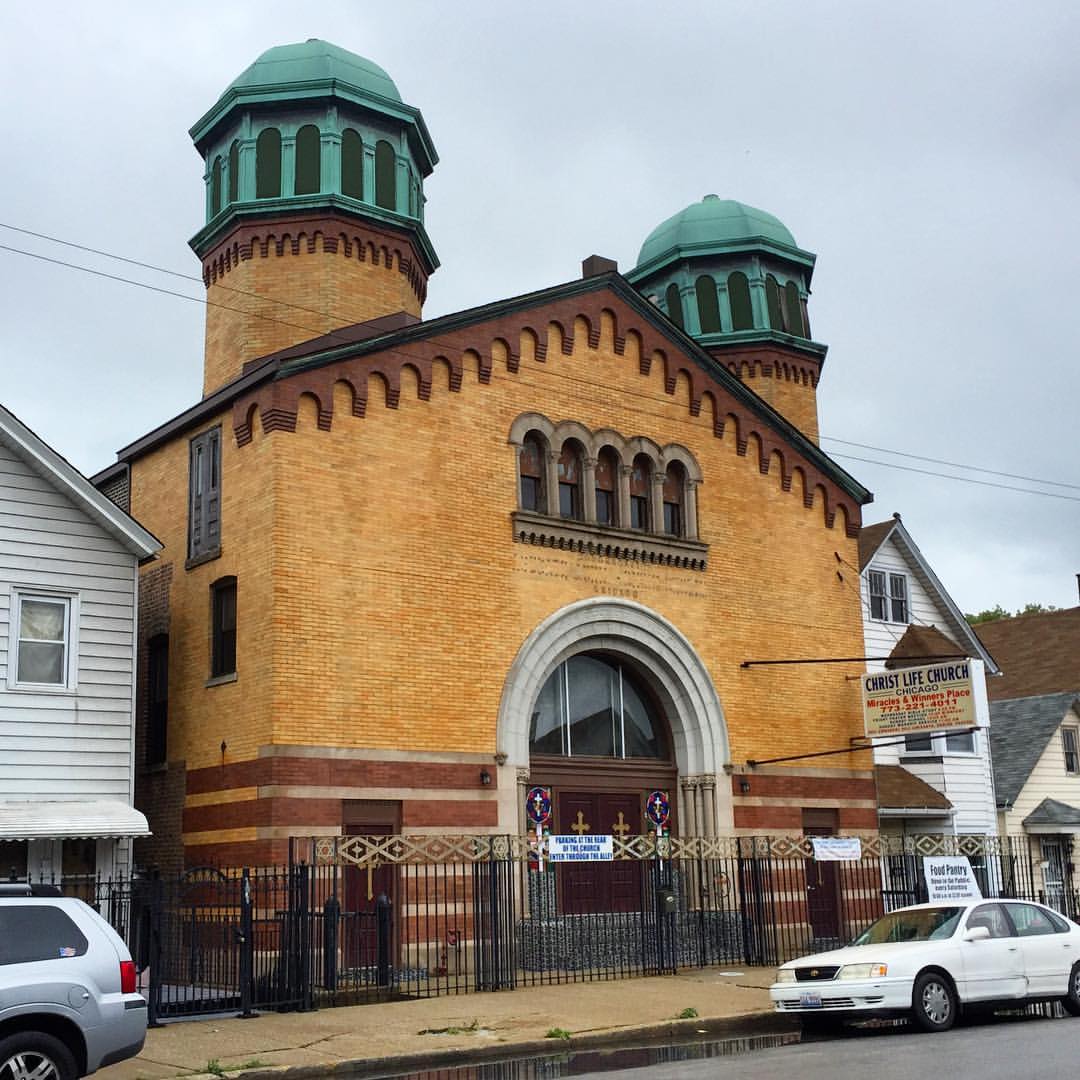
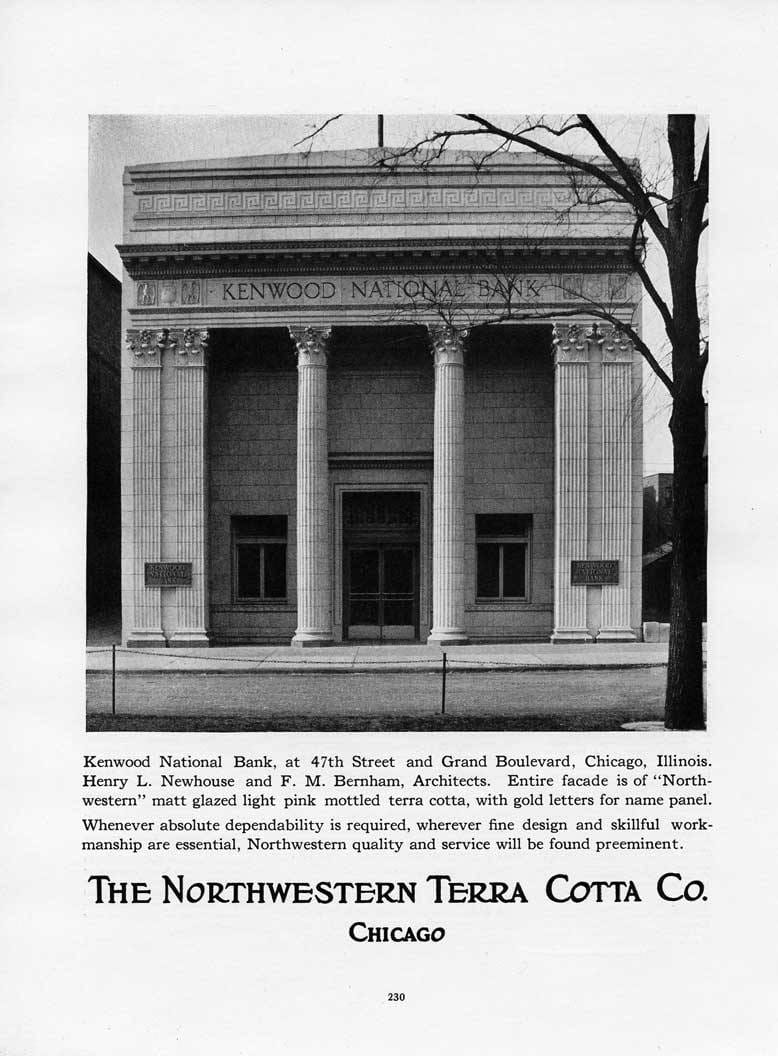
Agudath Achim Bikur Cholim Synagogue in the early 1900s, Percy H. Sloan, Newberry Library | Same synagogue, 2016, Eric Allix Rogers, Flickr | Kenwood National Bank, 1922, Ryerson & Burnham Archives, Art Institute of Chicago
Citizens State Bank expanded in 1929 and 1930, acquiring healthy local banks before the market crashed and then absorbing failing banks afterwards. Unfortunately, the Hoover administration chose inaction in the face of the Great Depression–for a country like the US, recessions are (mostly) a policy choice–and so after weathering the initial years of the Great Depression banks started to fail in large numbers, including Citizens State Bank in May 1932.
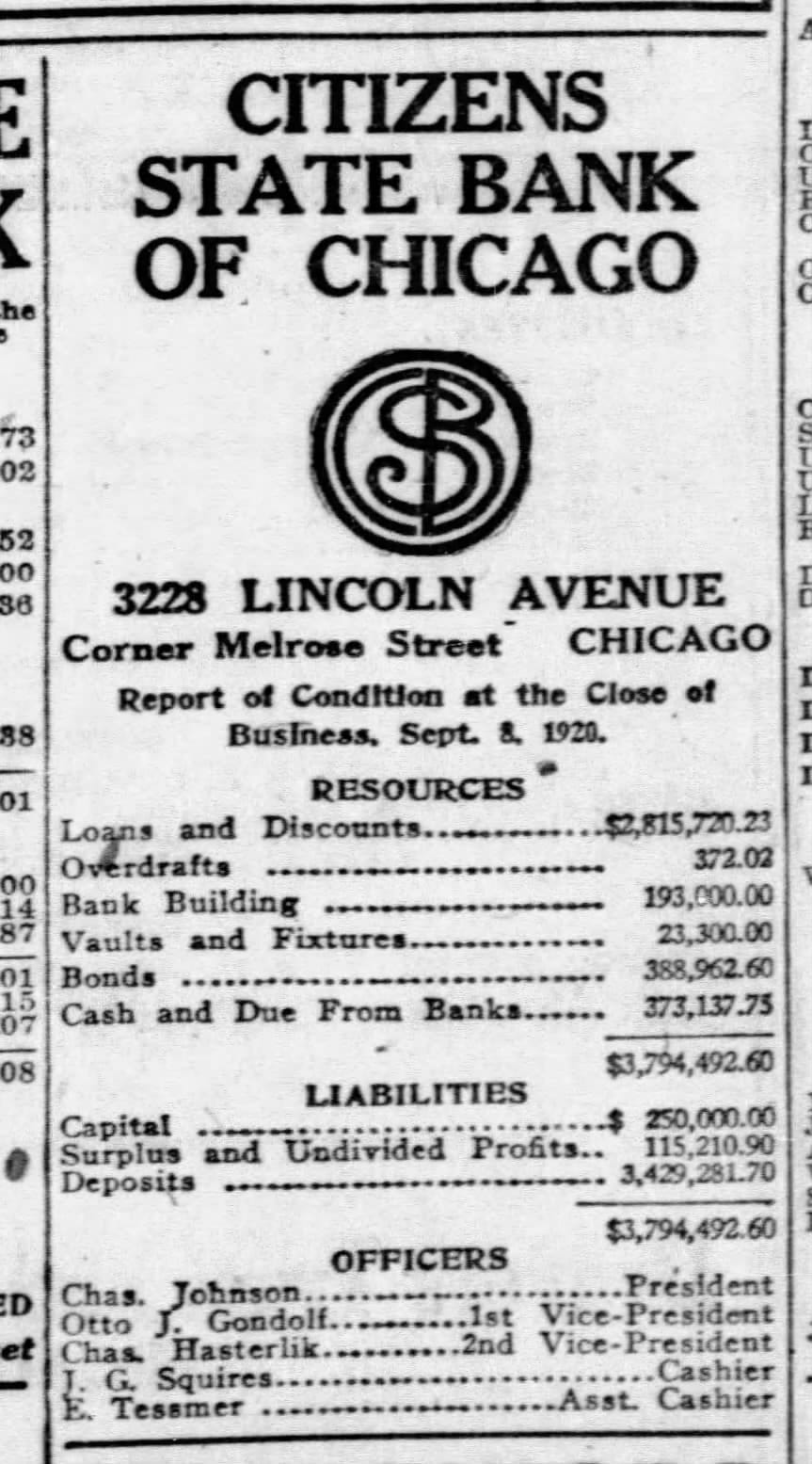
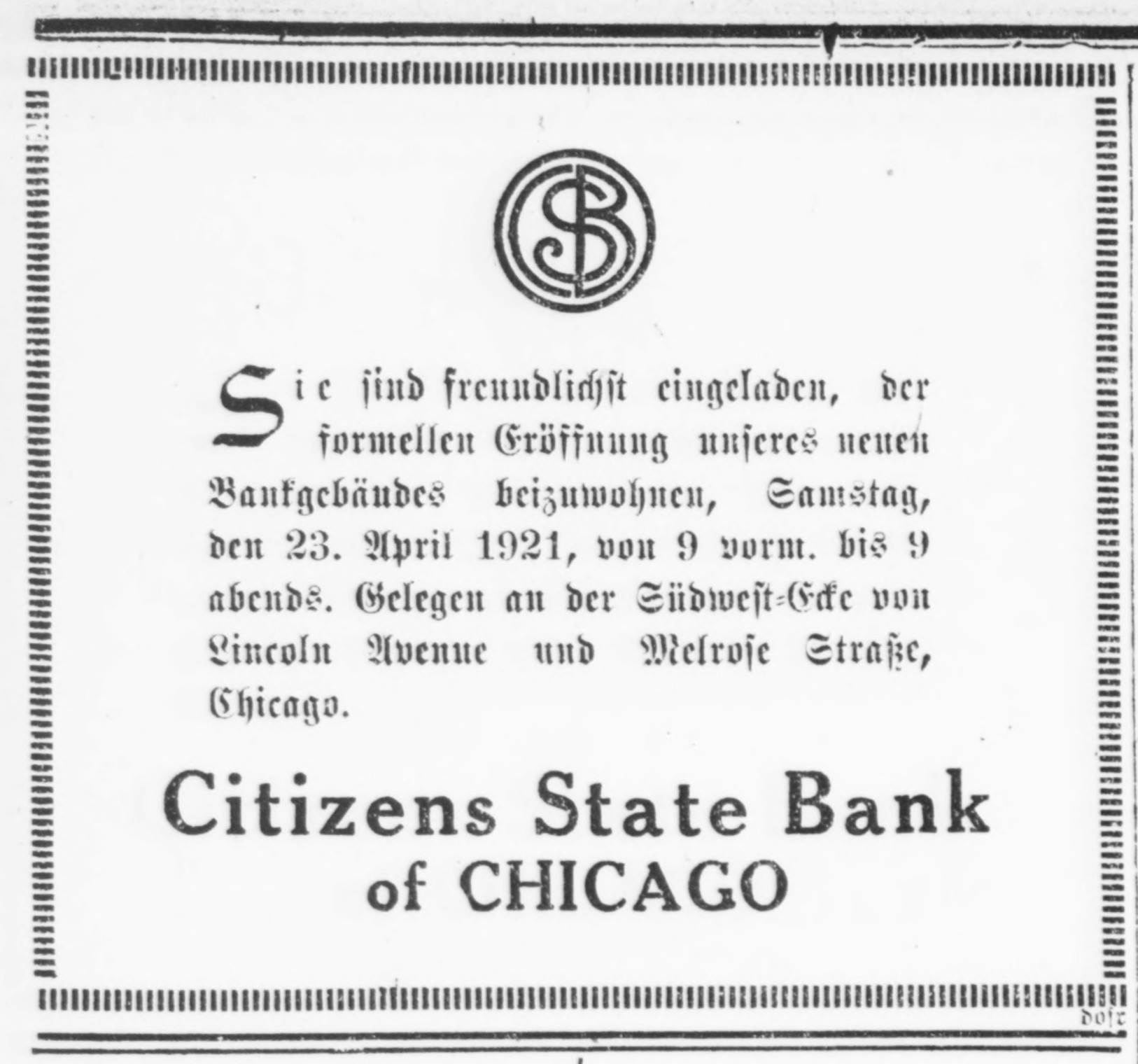
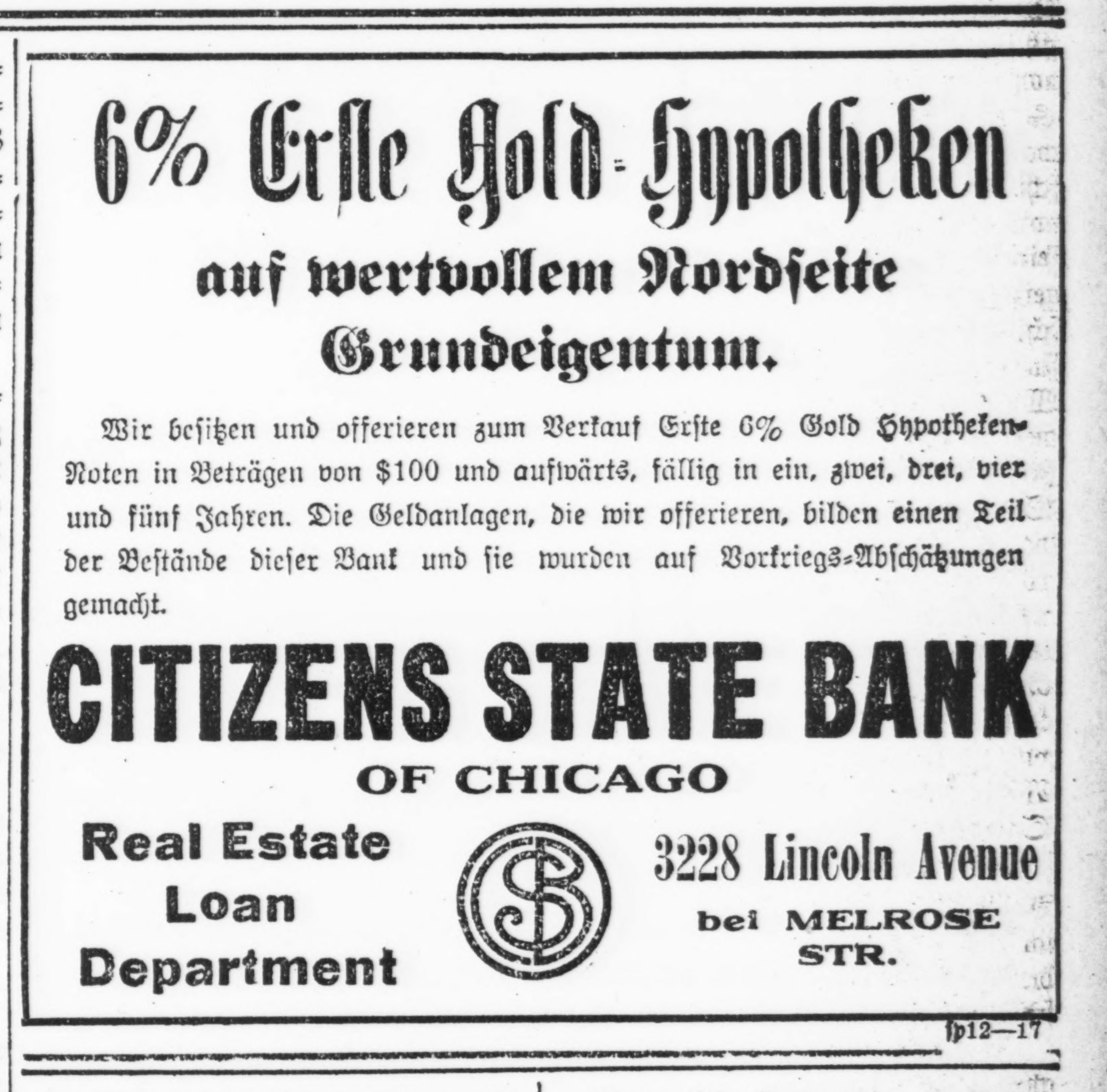
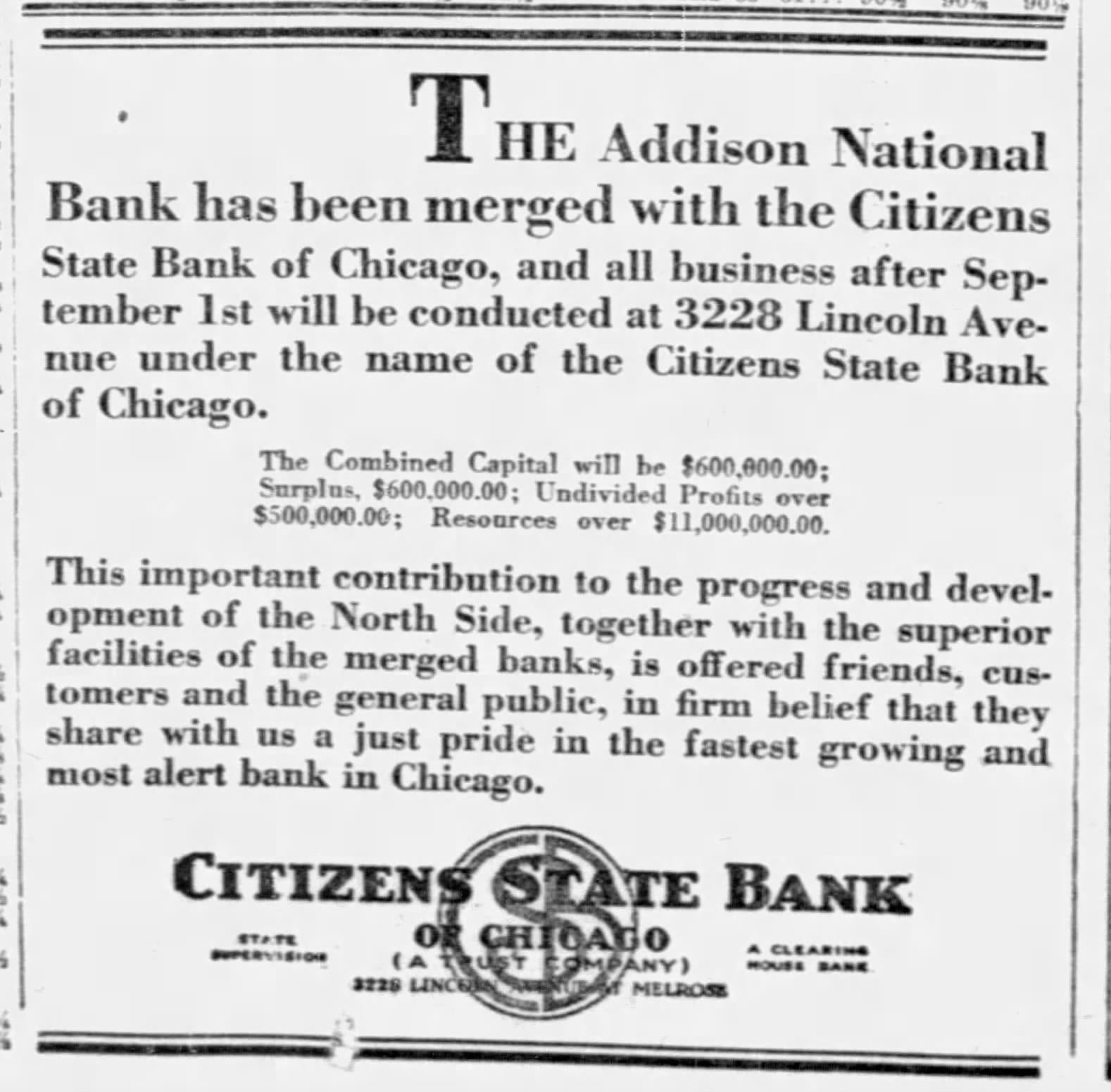
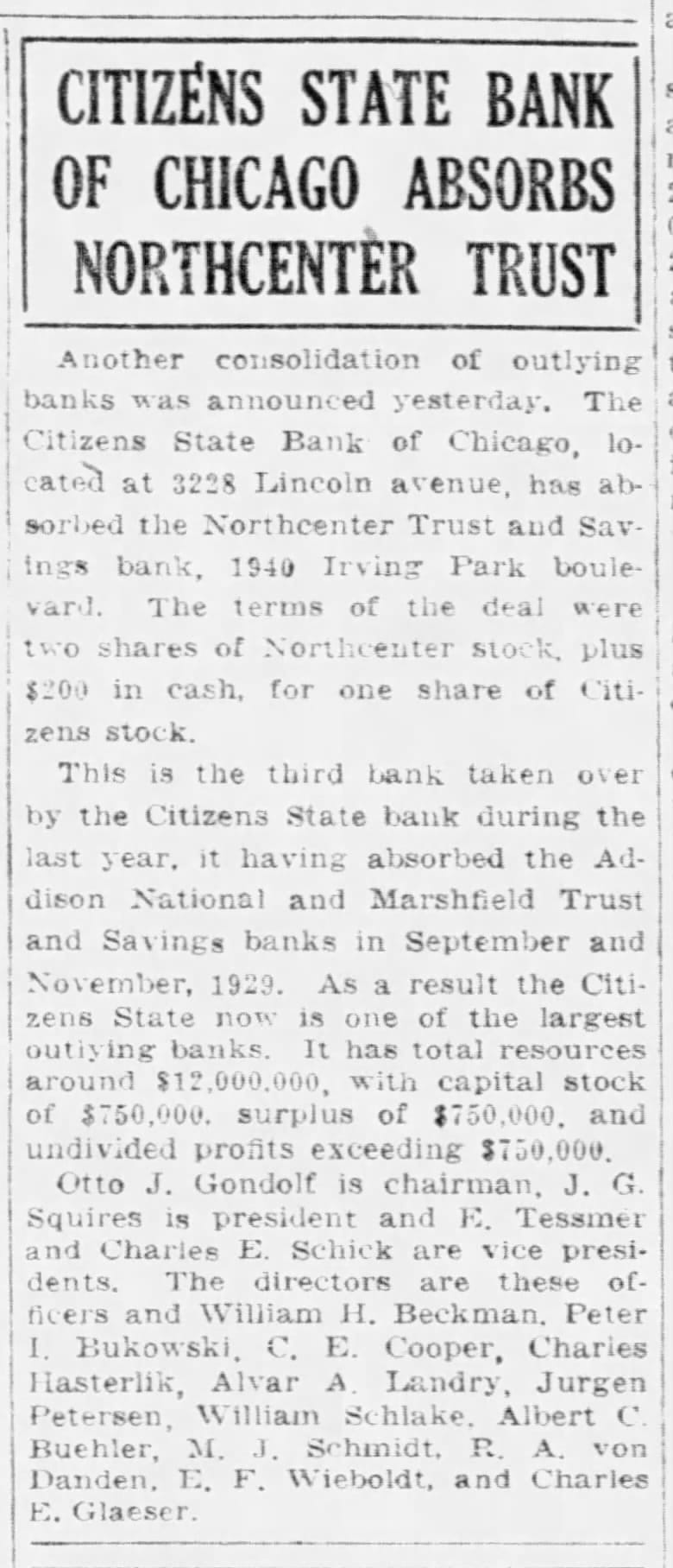
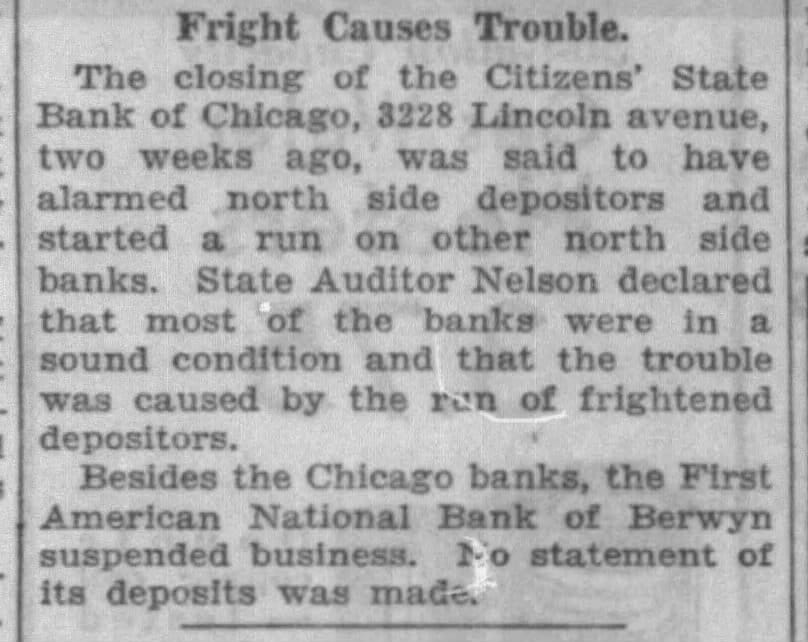
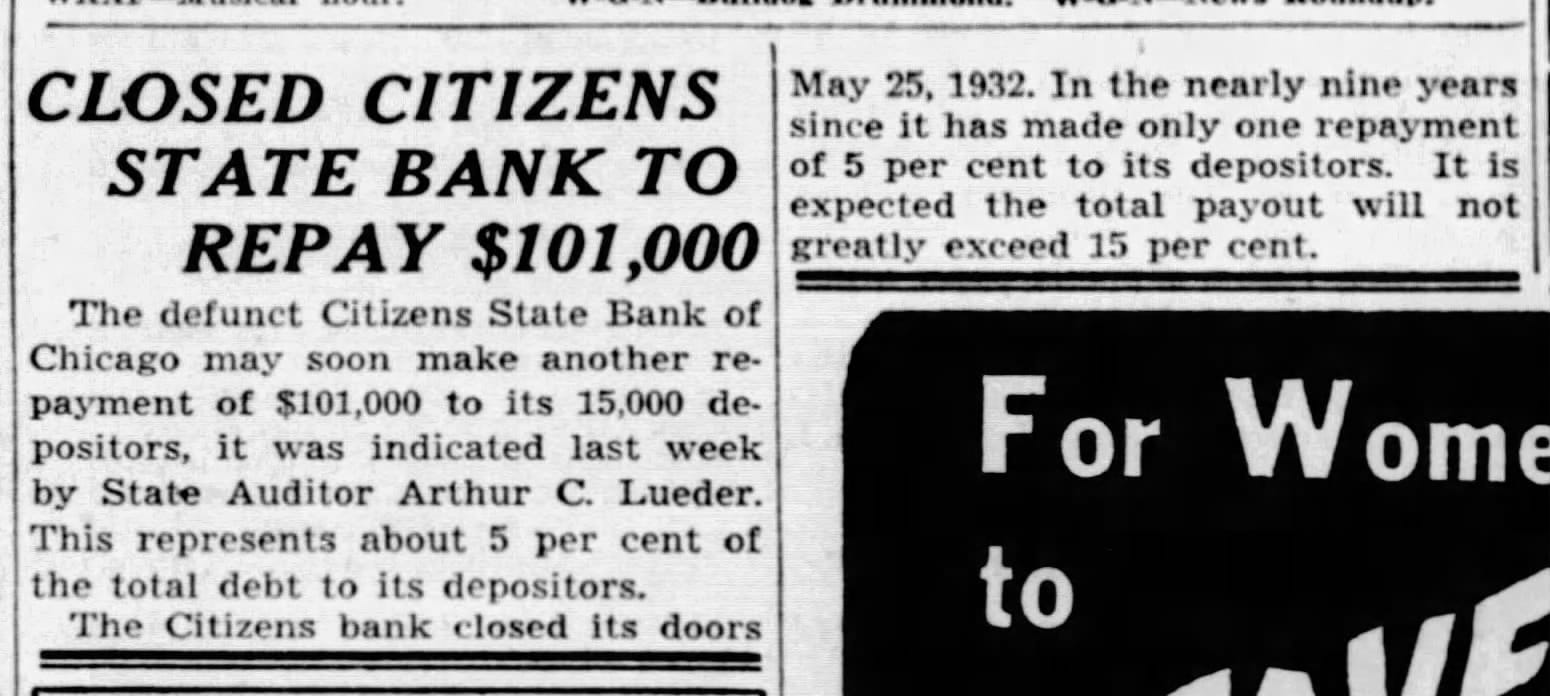
1920 report on the condition of the bank | 1921 bank ad, Abendpost, the Internet Archive | 1921 bank ad, Abendpost, the Internet Archive | 1929 bank merger | 1930 bank acquisition | 1932 bank run and failure | 1941 article on the status of depositor repayments
It was a failure that must have hit the German community especially hard. By 1940 the defunct bank had only paid back 5% of what it owed to depositors (leveraging the power of the federal government to help people, in marked contrast to the nihilistic market helplessness of the Hoover administration, the Roosevelt administration created the FDIC to protect the bank deposits of regular people and prevent this particular financial calamity from happening again).
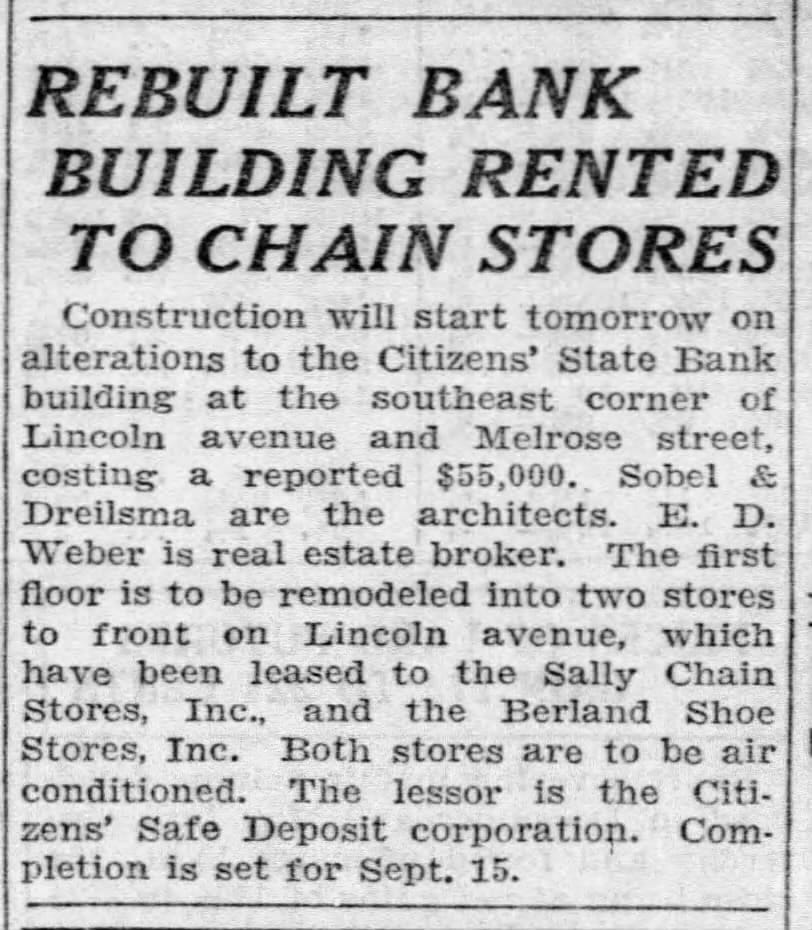
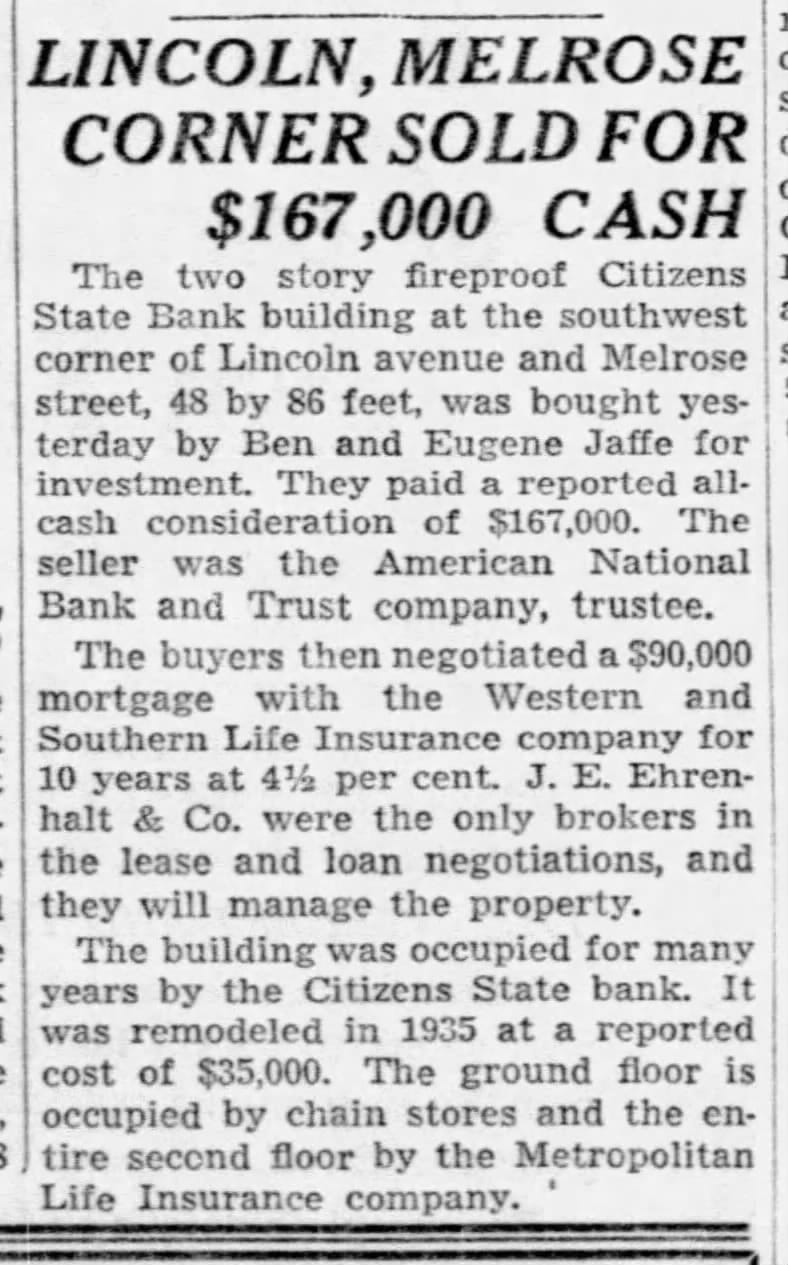
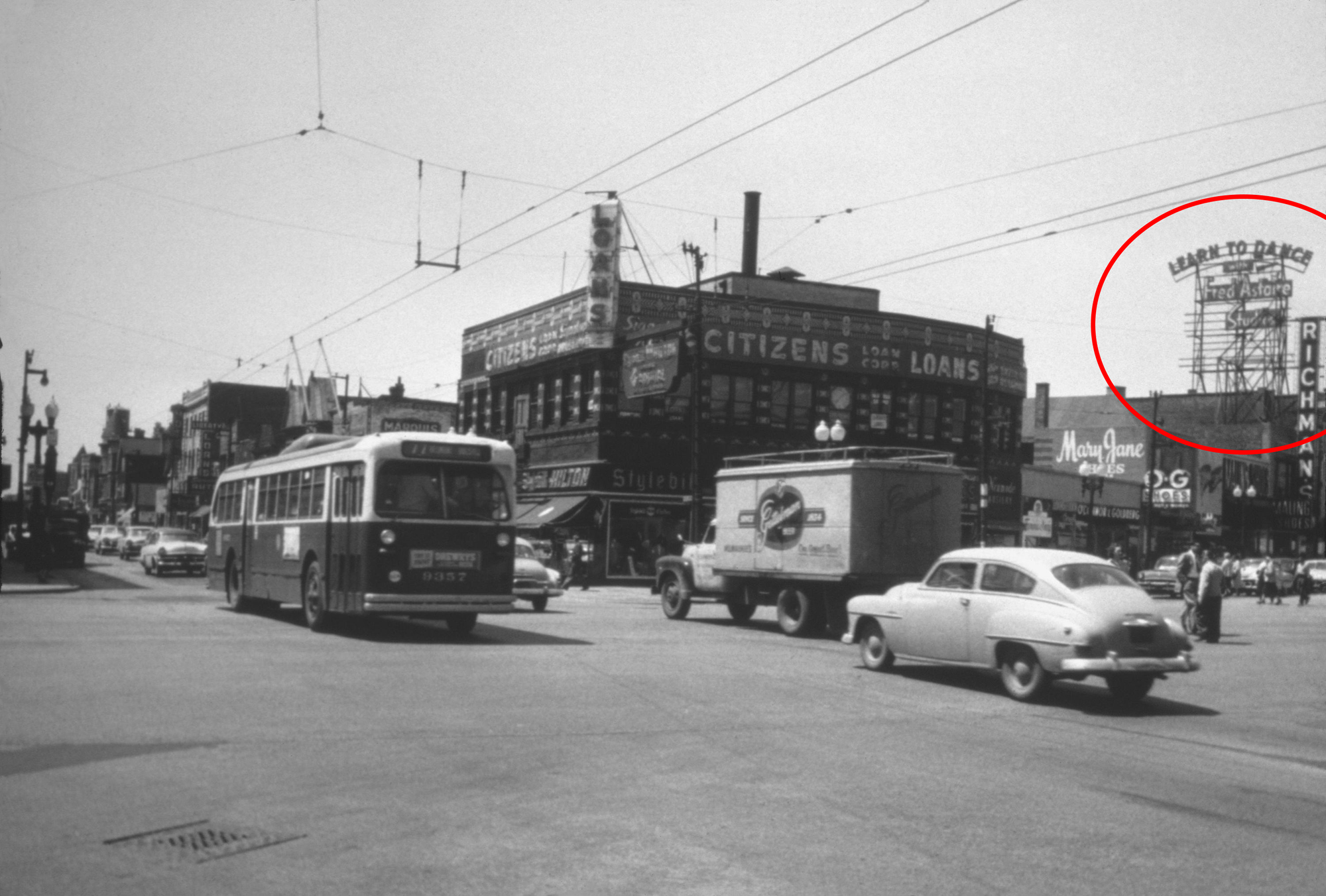
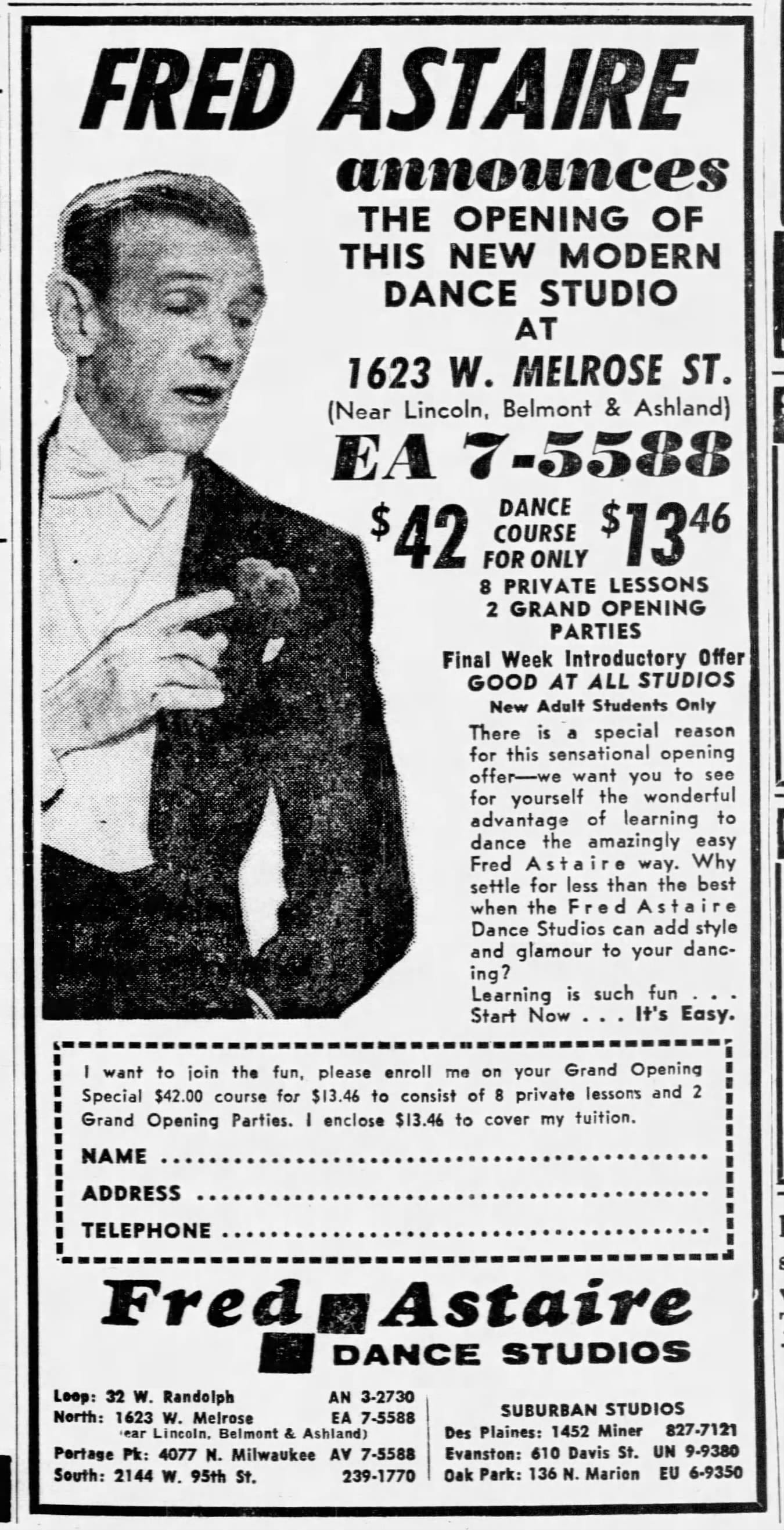
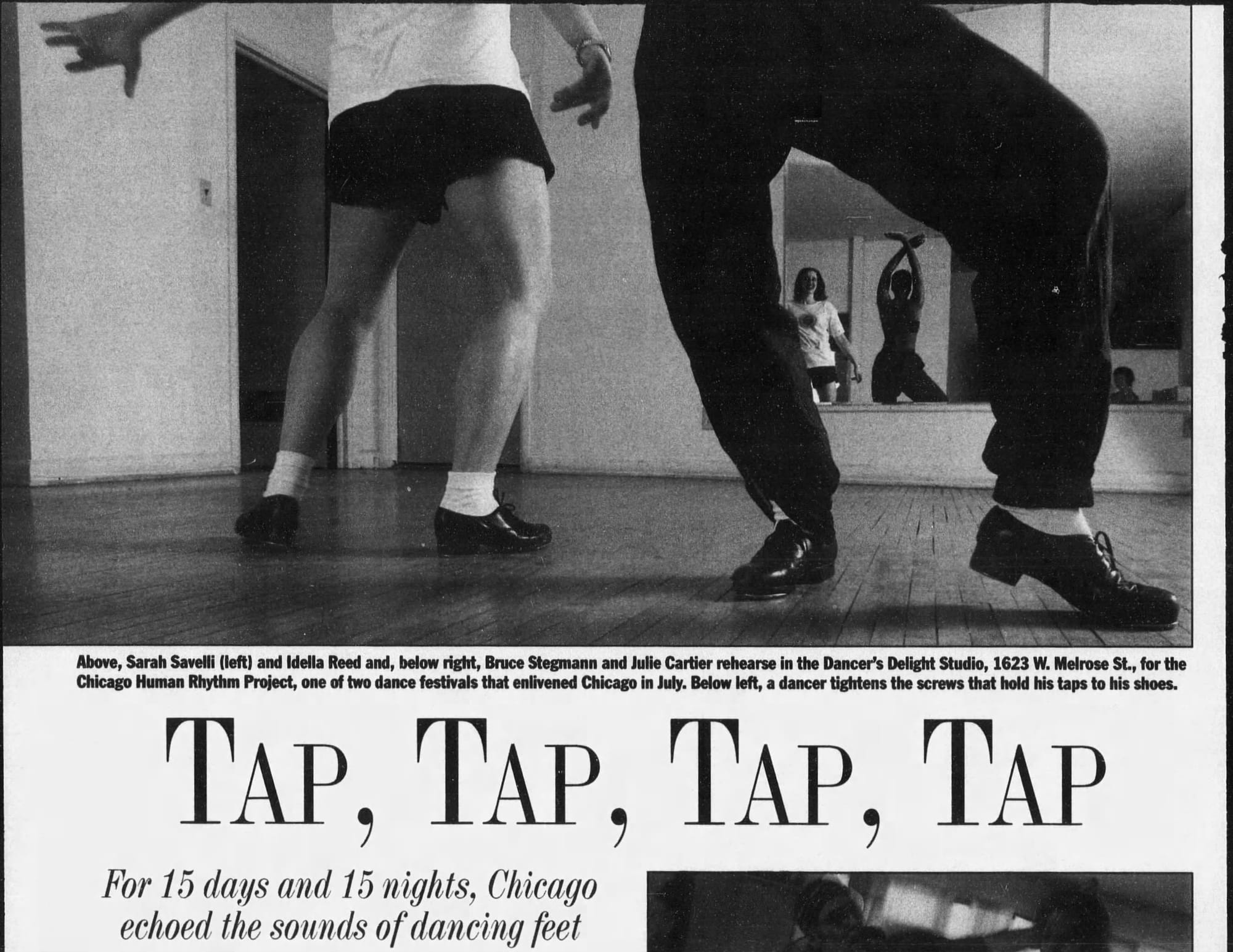
1935, the renovated building is rented to retailers | 1939, the building is sold | 1955 photo with the Fred Astaire sign visible, Ronald J. Sullivan Photograph Collection, Northwestern University Transportation Library | 1965 ad for the Fred Astaire Dance Studio in the building | 1996 photo from the inside of the dance studio
The building wouldn’t stay vacant for long. A 1935 remodel reconfigured it for retail, and Sally Frocks, Berland Shoes, and the Metropolitan Life Insurance Company moved in (...a very 1930s list of tenants). If you were wondering what a leased-out, 20-year-old reused bank would cost, the building sold for $169,000 in 1939, the equivalent to $3.8m today. Some of the retail tenants who passed through over the years include Speigel, Thomas McAnn Shoes, Howard Clothes, Kerry Sportswear, and a pawn shop. The building was also home to an upstairs dance studio for decades. First, Fred Astaire branded from the 1950s into the 1970s (which installed a big sign on top of the building), and then as an independent studio into the 1990s.
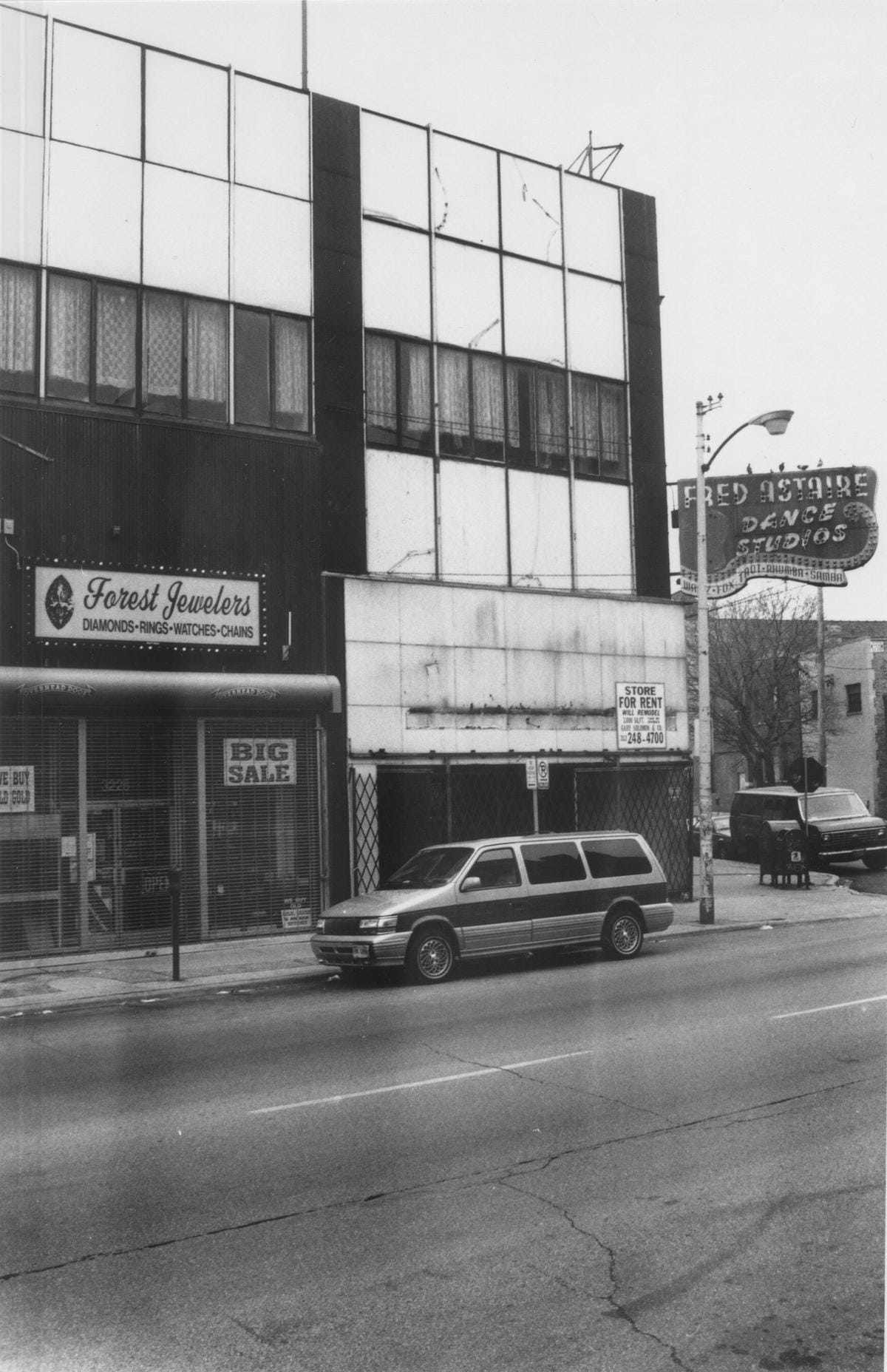
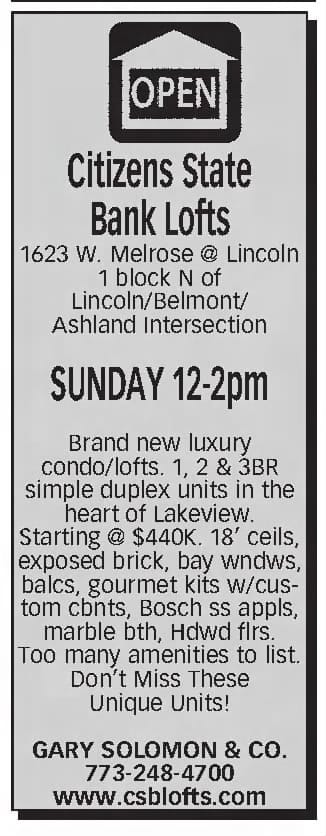
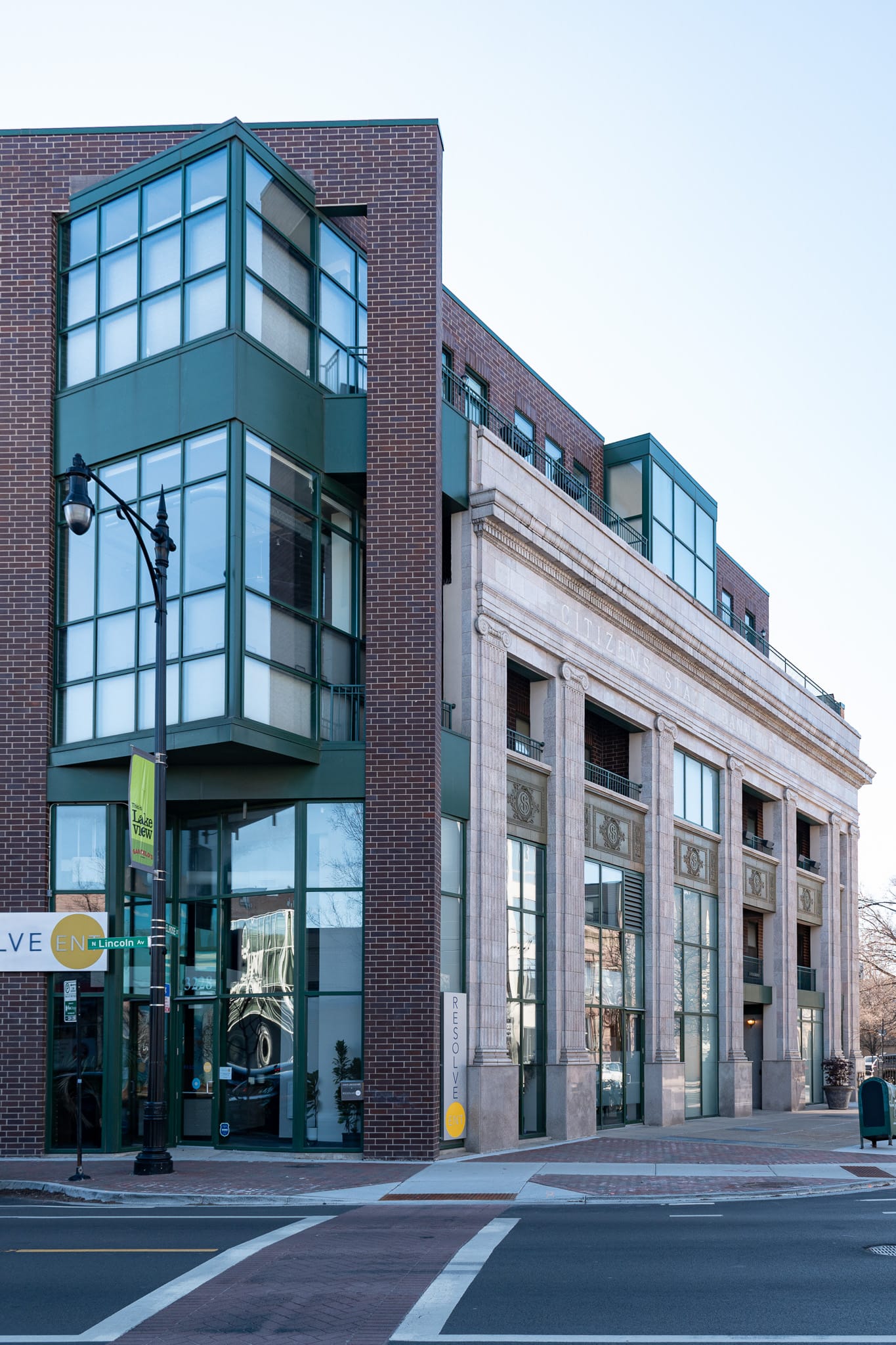
1995, Robert W. Krueger, Chicago Public Library via Chicago Collections | 2008 ad for the Citizens State Bank Lofts | 2024 photo
In the early 2000s, with Lakeview gentrifying rapidly from its down-at-heel nadir in the 1970s, developer Gary Solomon & Co. started working to convert the old bank into loft condos. The Lincoln Avenue elevation was in bad shape, so they rebuilt it with a three-story glass, steel, and brick triangular insertion, and added an extra floor on top. Designed by FReD FRANK architects, the nine unit Citizens State Bank Lofts opened in 2008.
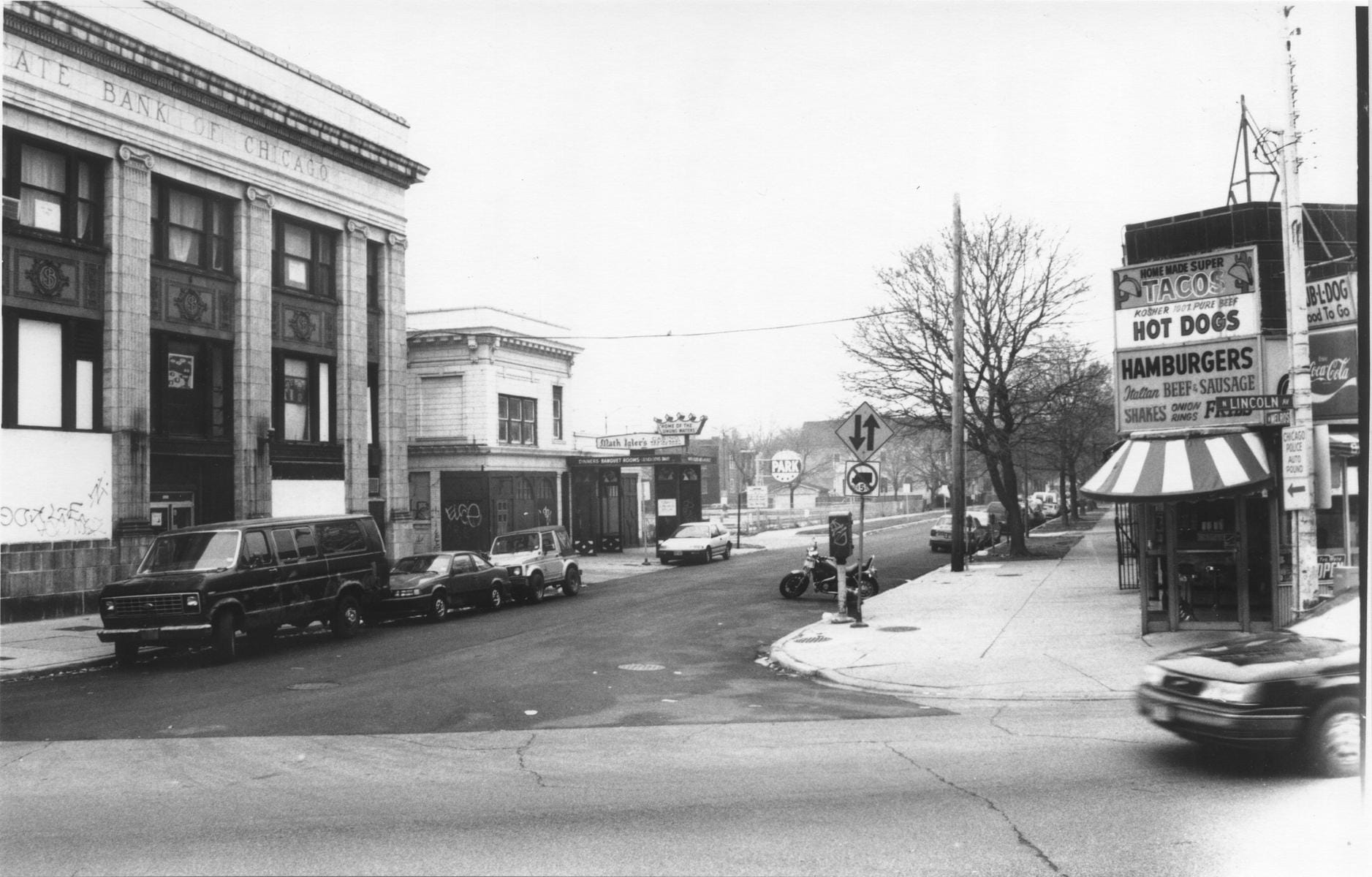
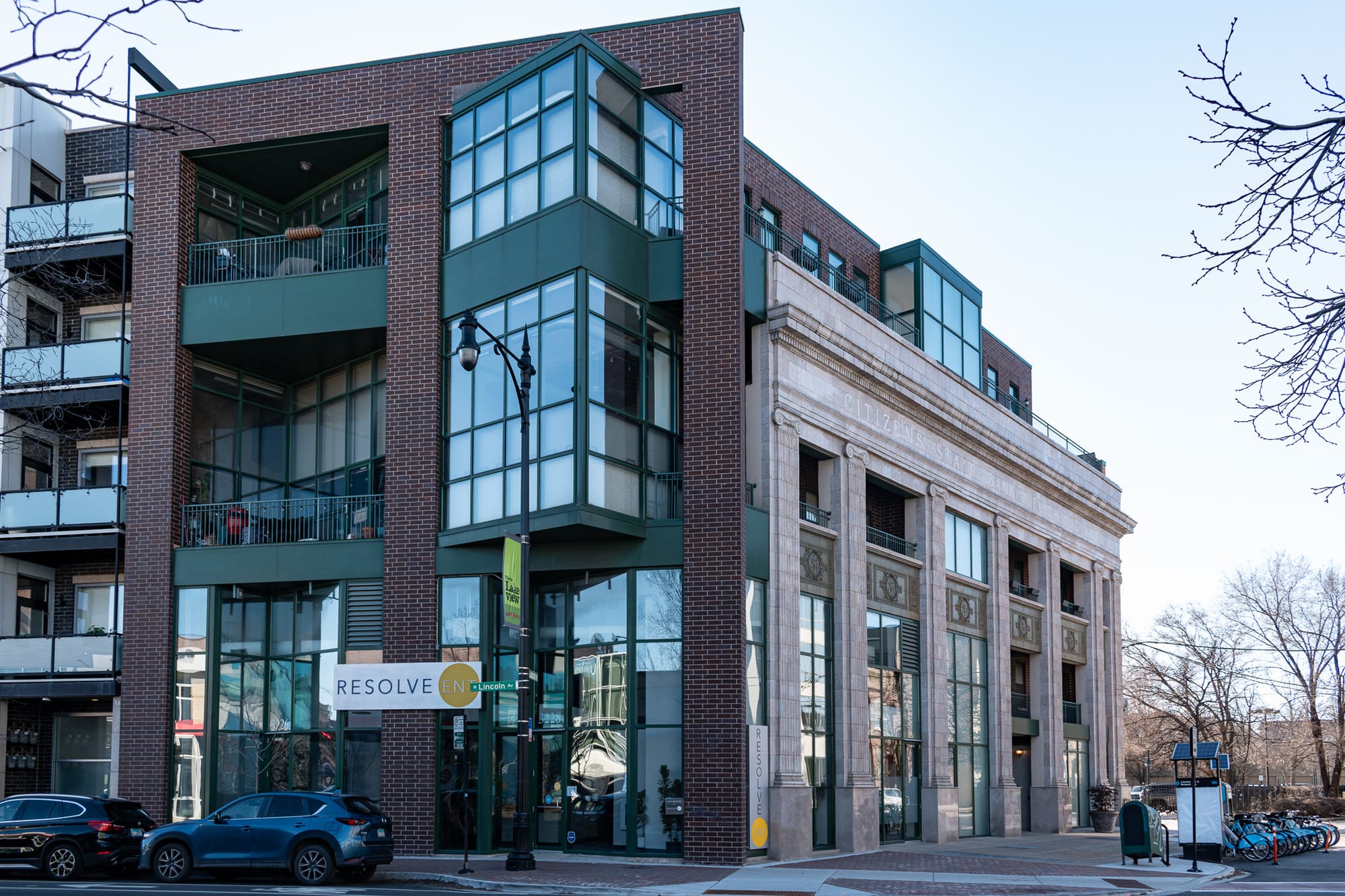
1995, Robert W. Krueger, Chicago Public Library via Chicago Collections | 2024 photo
Production Files
Further reading:
- Article about units on sale in the Citizens State Bank Loft building in Chicago Mag in 2014
- A feature by the brick supplier for the condo conversion
- The CSB Lofts sales website from 2009
- Articles in YoChicago about the condo conversion, "Citizens State Bank Lofts mixes up old and new" and "Old Citizens State Bank converts to lofts"
- More info on Henry L. Newhouse in the (Former) Anshe Sholom Synagogue Building Landmark Designation Report
I wasn't super familiar with Henry L. Newhouse–despite writing about another building his firm designed, the Hotel Sutherland–but this stuff is pretty good.
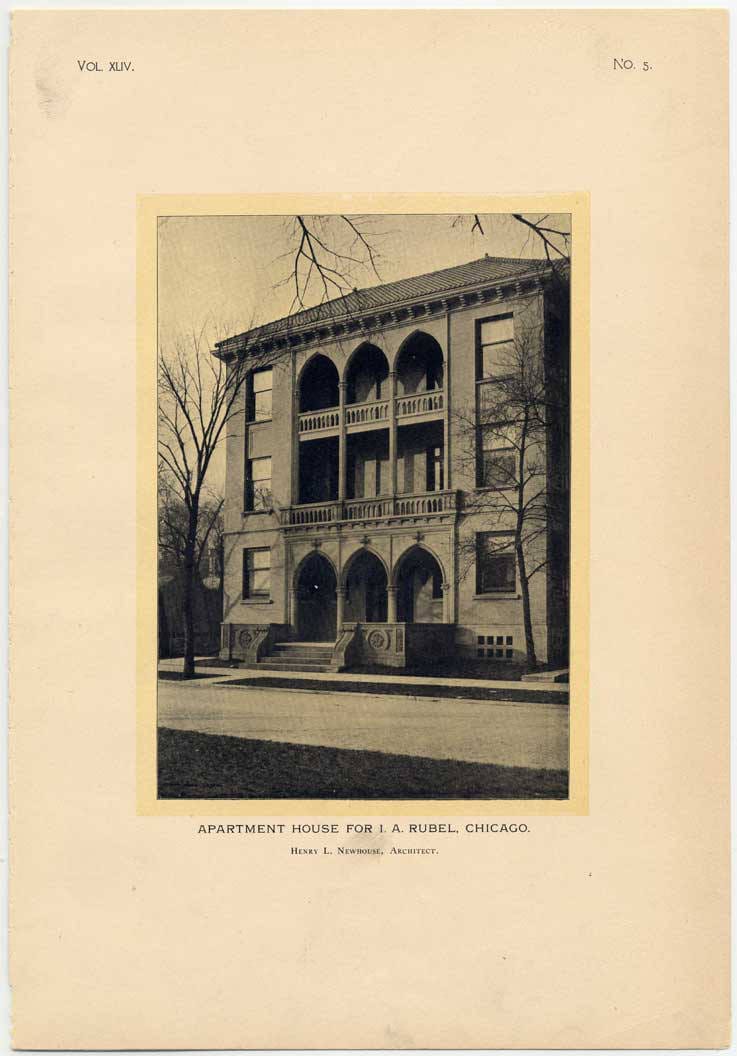
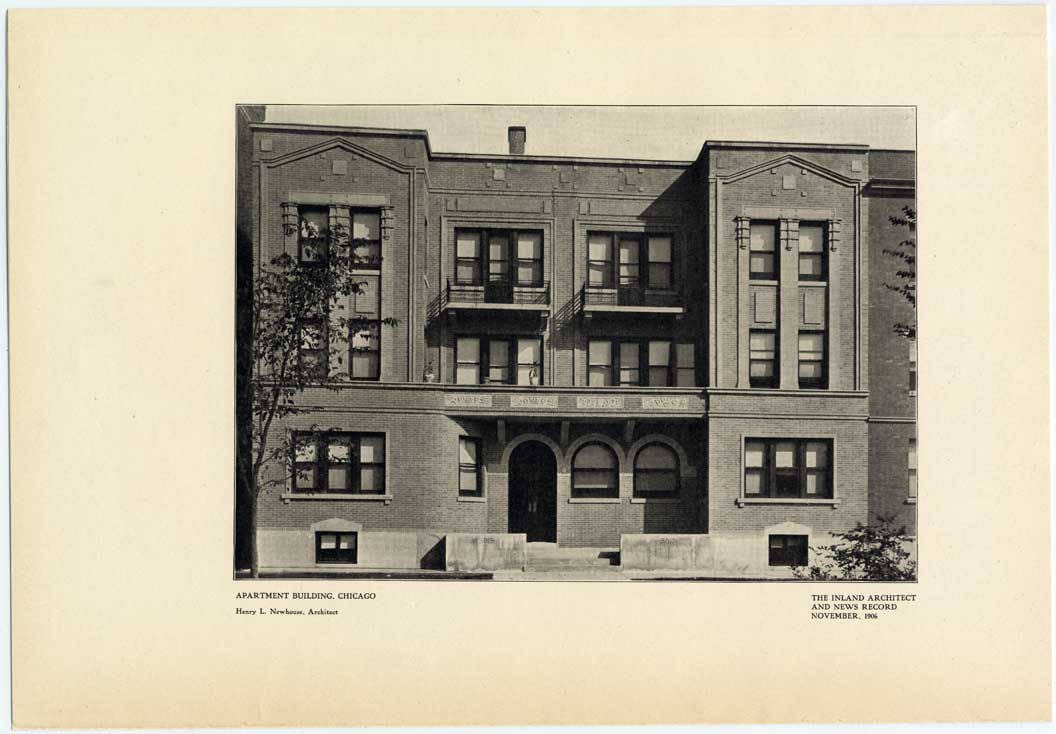
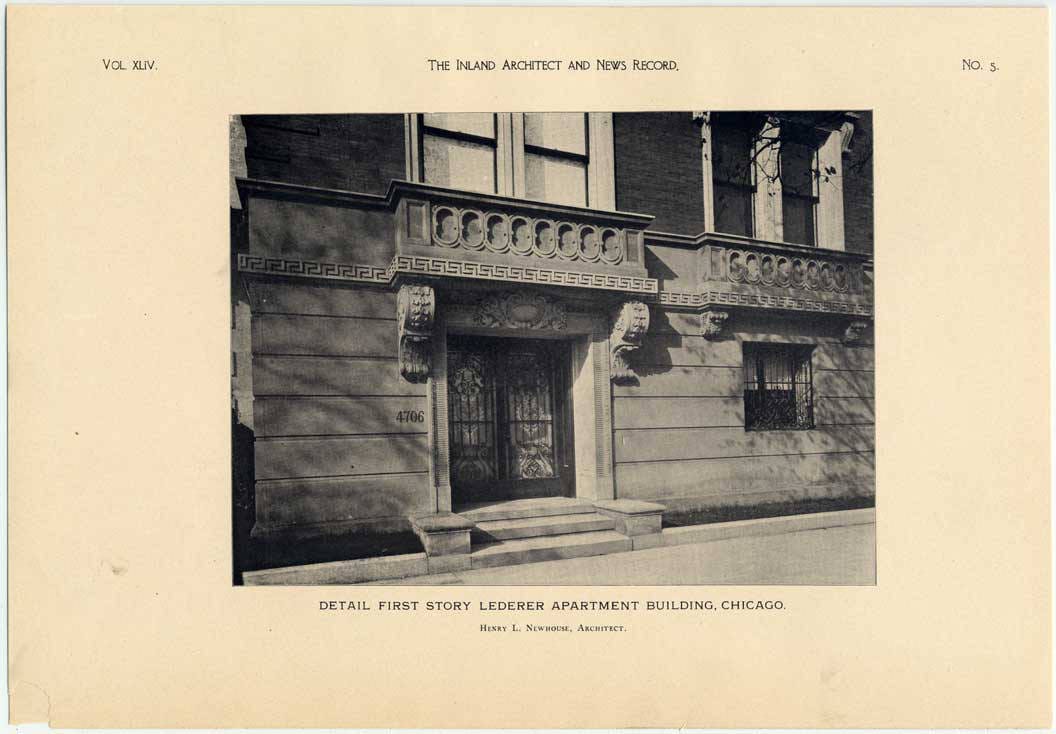
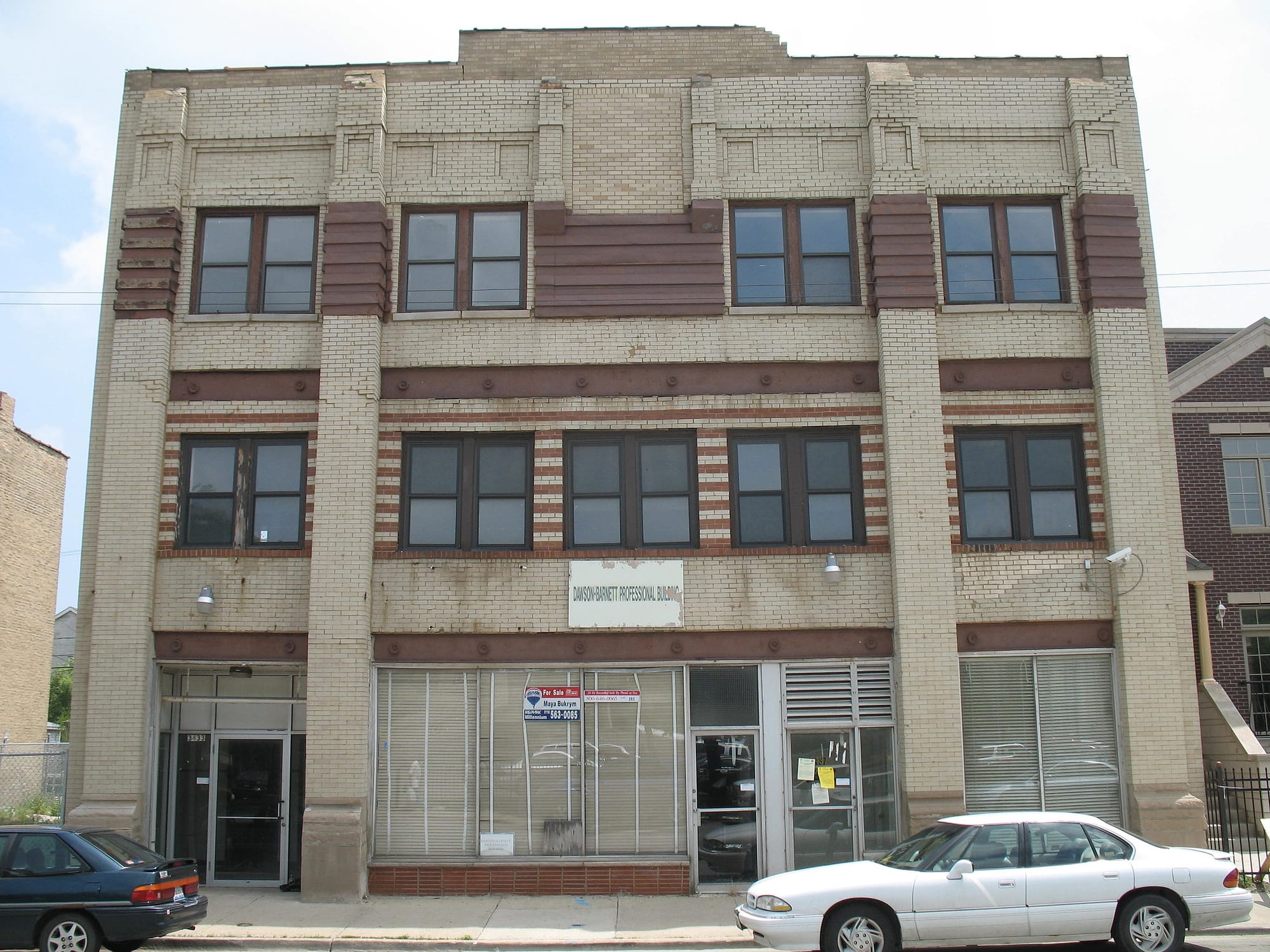
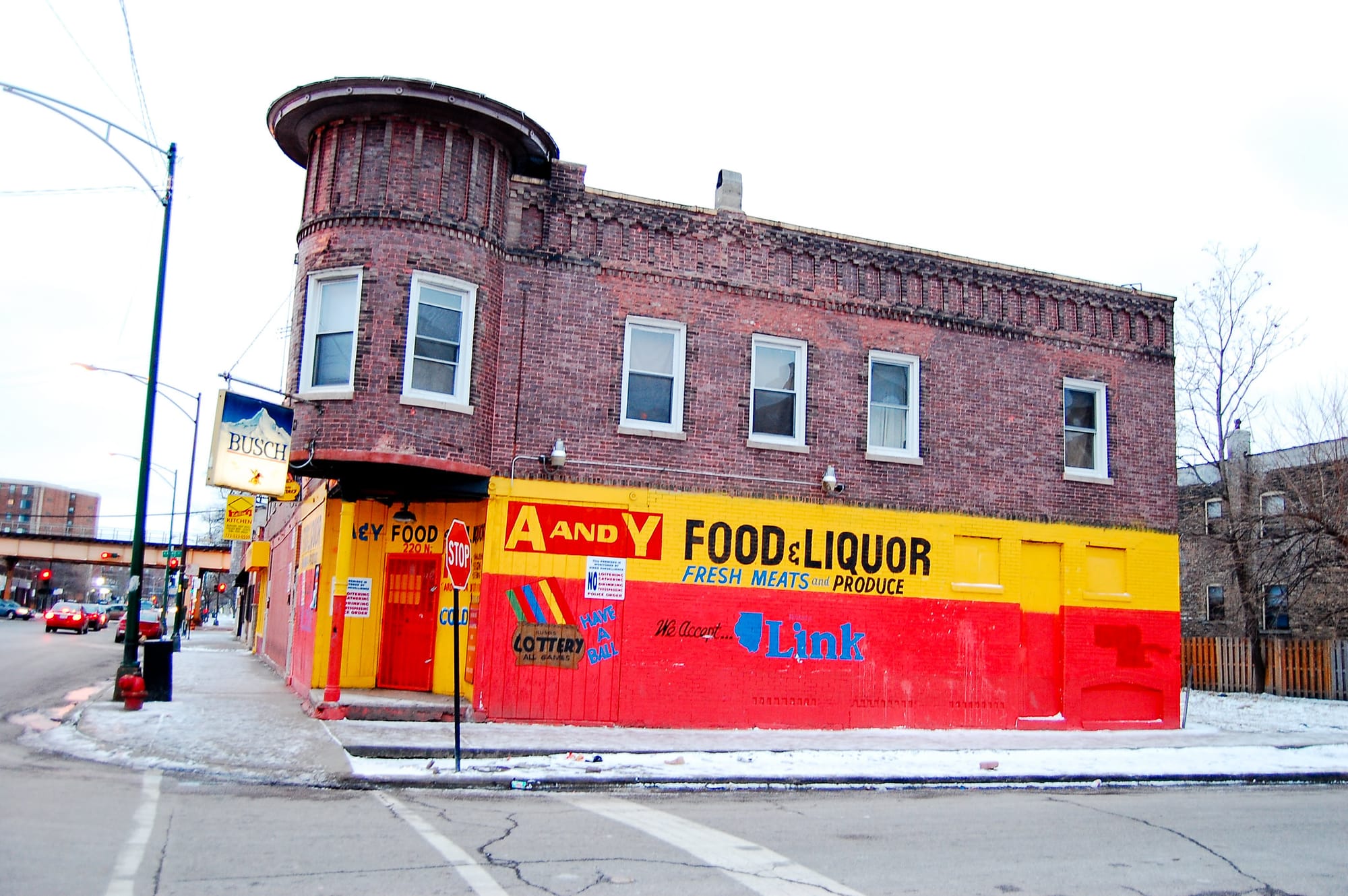
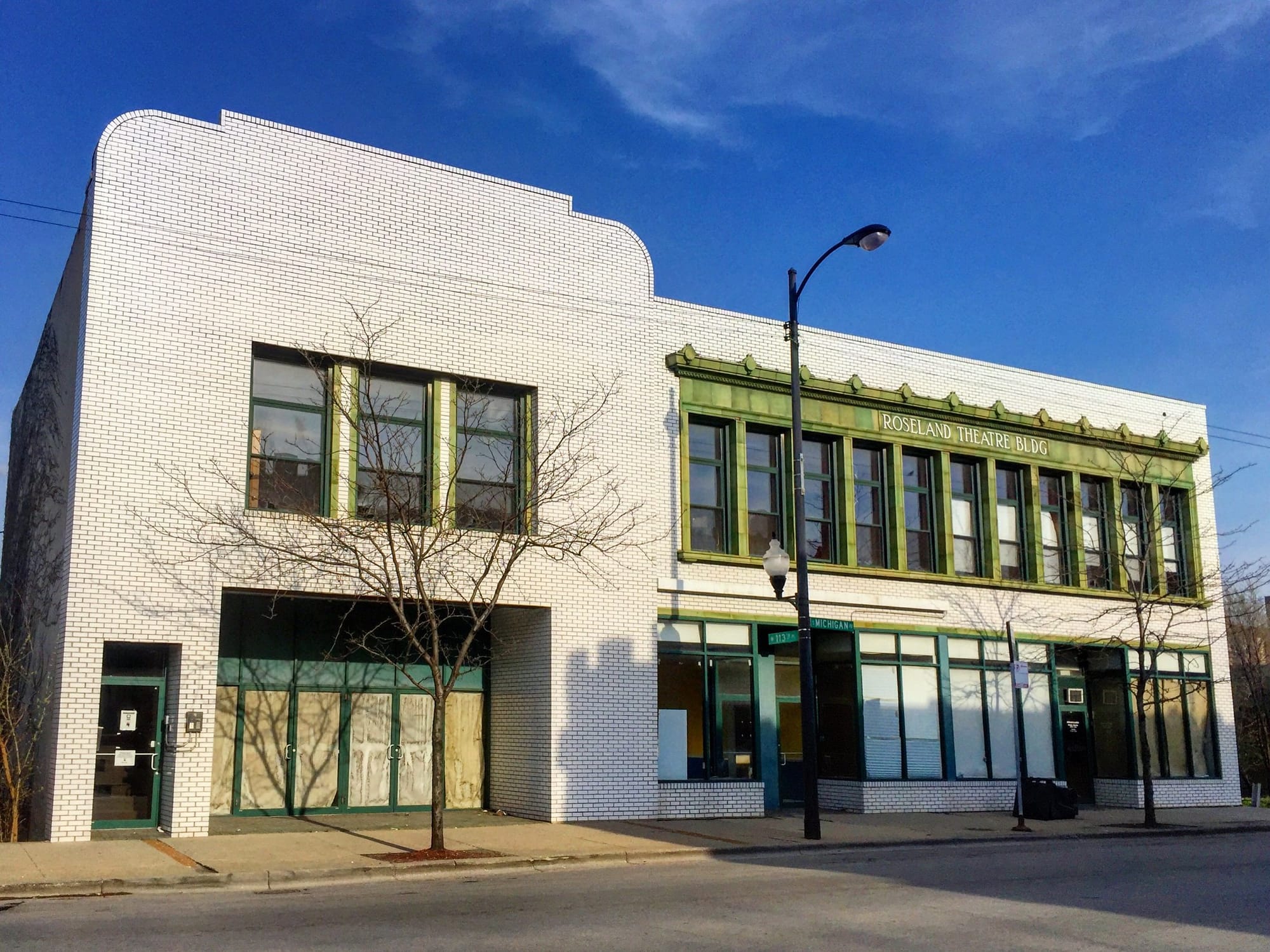
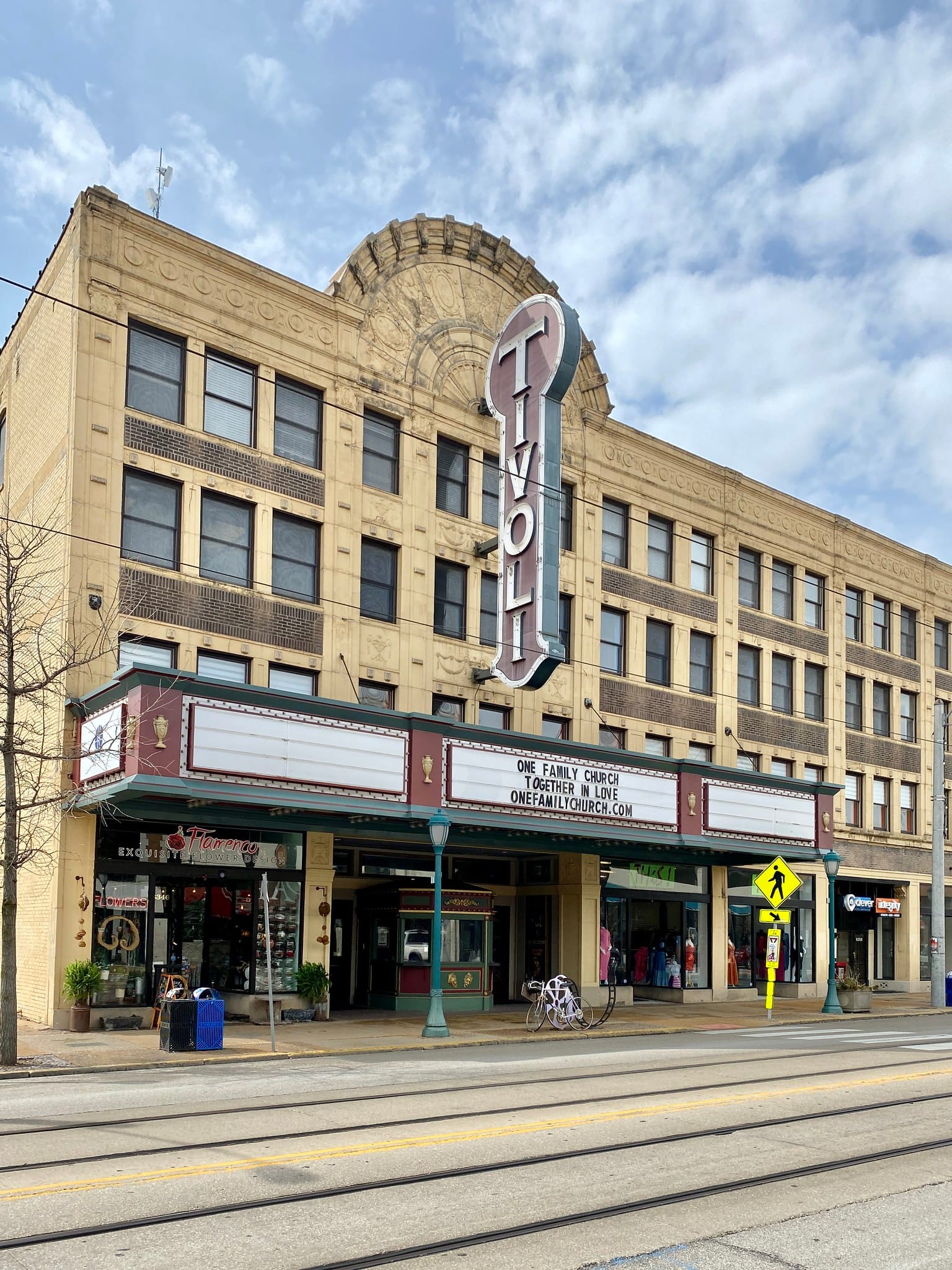
All designed by Henry L. Newhouse: Rubel Apartments (demolished), Ryerson & Burnham Archives, Art Institute of Chicago | Apartment building, 5015 S. Martin Luther King Drive (demolished), Ryerson & Burnham Archives, Art Institute of Chicago | Lederer apartments (demolished), Ryerson & Burnham Archives, Art Institute of Chicago | Chicago Defender Building (formerly a synagogue), Antonio Vernon, Wikimedia Commons | 220 N. Homan, 2010, Eric Allix Rogers, Flickr | Roseland Theater, 2017, Eric Allix Rogers, Flickr | Tivoli Theater, University City, Missouri, 2023. Warren LeMay, Flickr
A couple relevant help wanted ads, with the two German-language ones from the Abendpost looking for "experienced porters". In 1944, Math Igler's was looking to pay a chef the equivalent of roughly $86k a year.




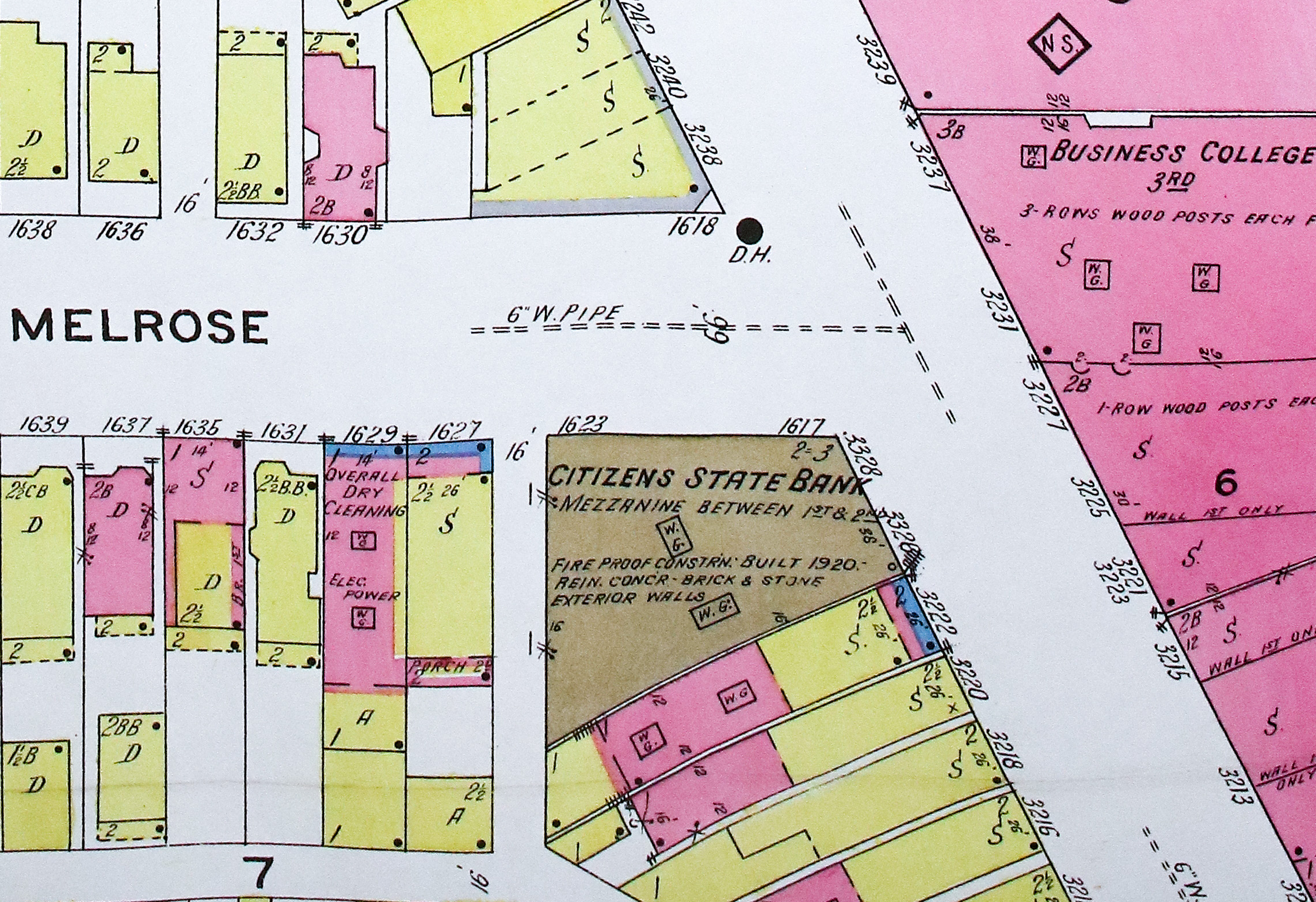
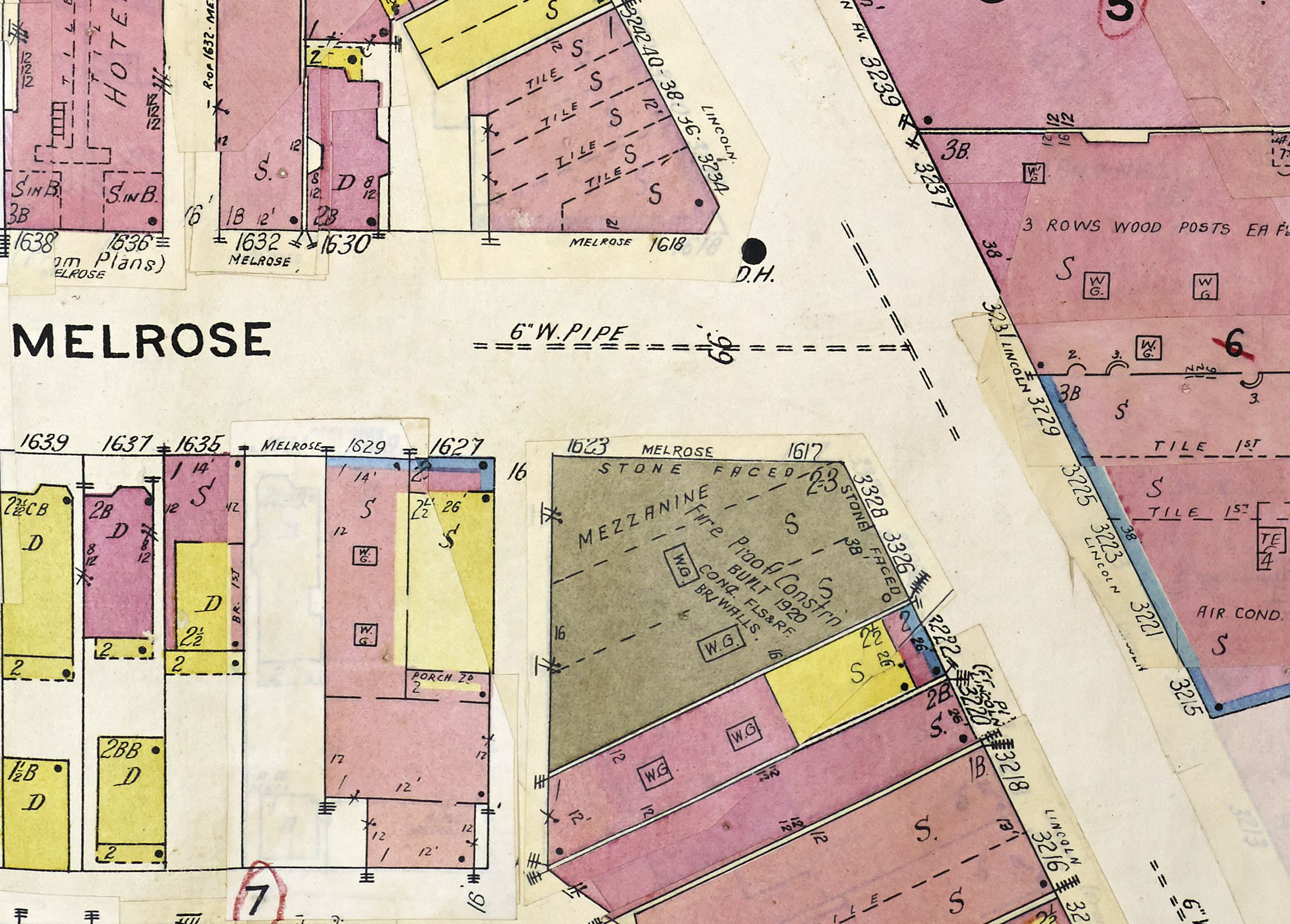
1923 Sanborn map | 1950 Sanborn map
The permit for Math Igler's, 1627 W. Melrose, is basically illegible...but I found it, so here.
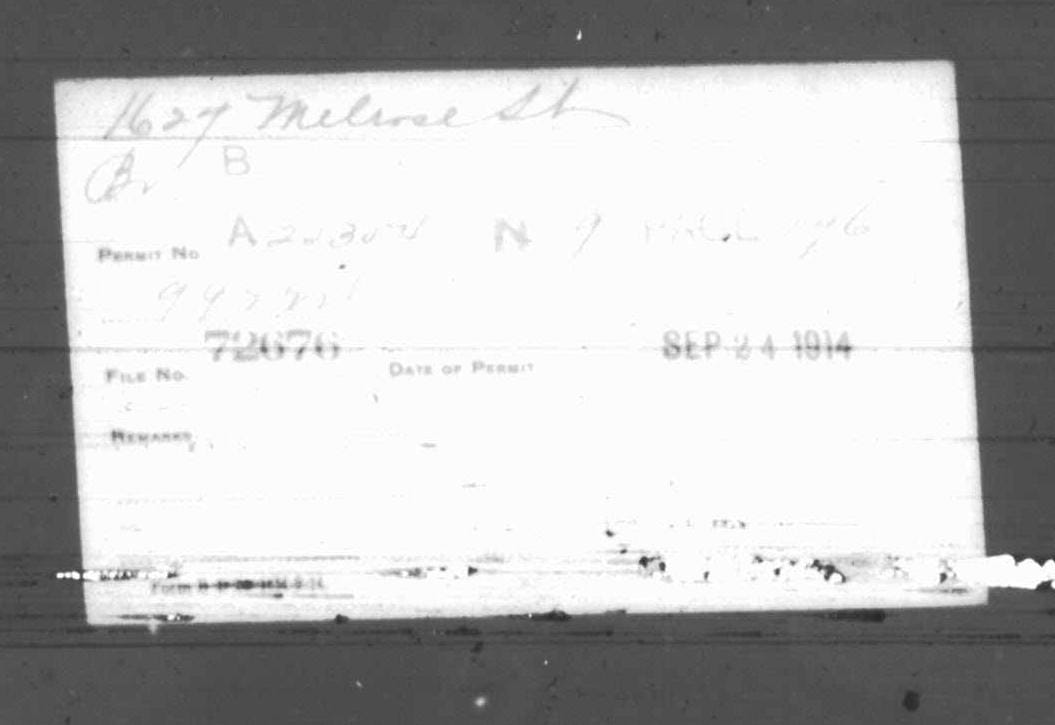
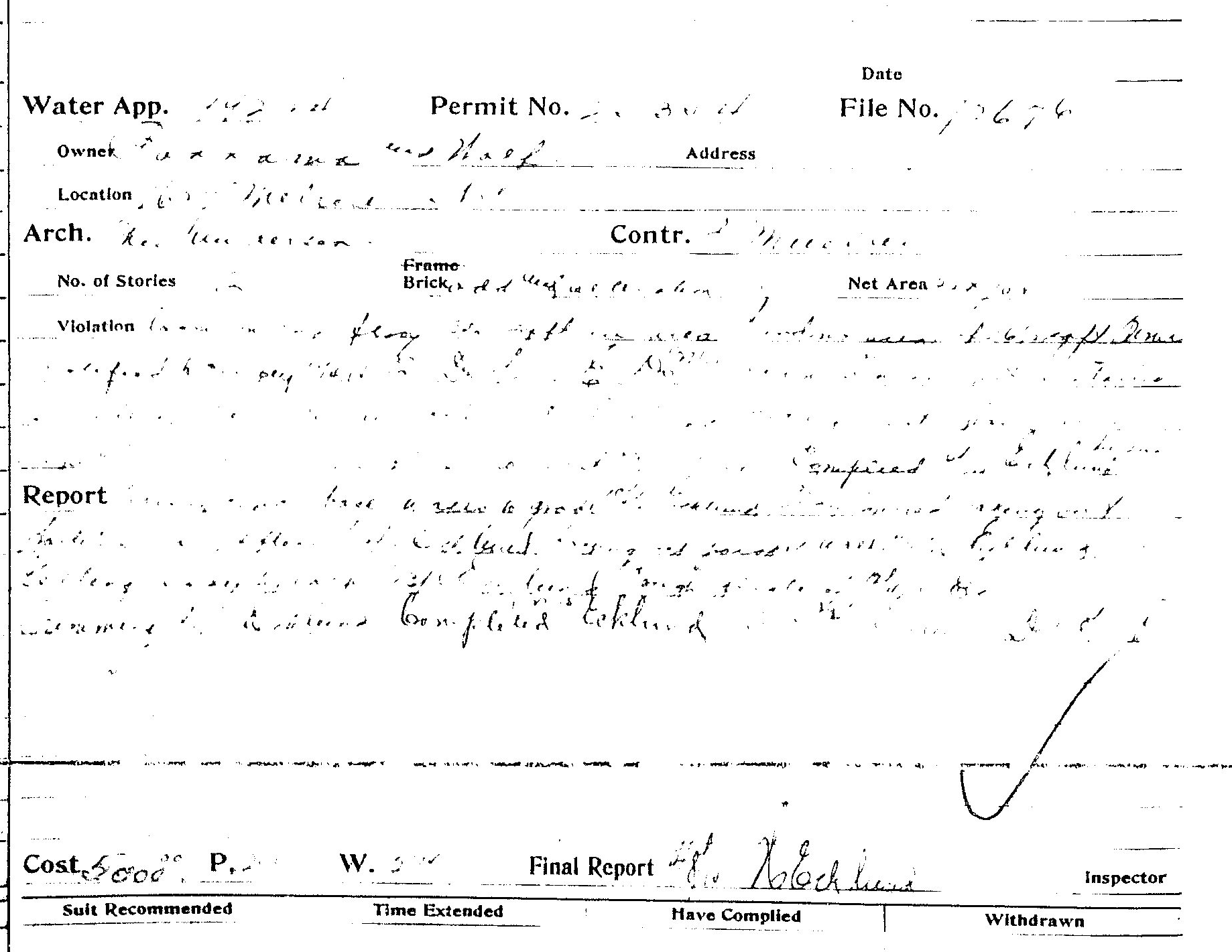

A little more on the Citizens State Bank.
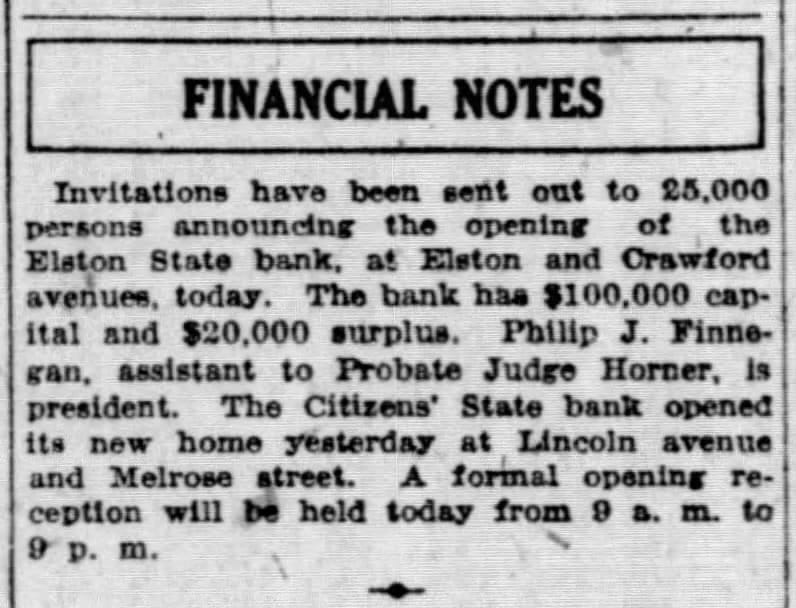
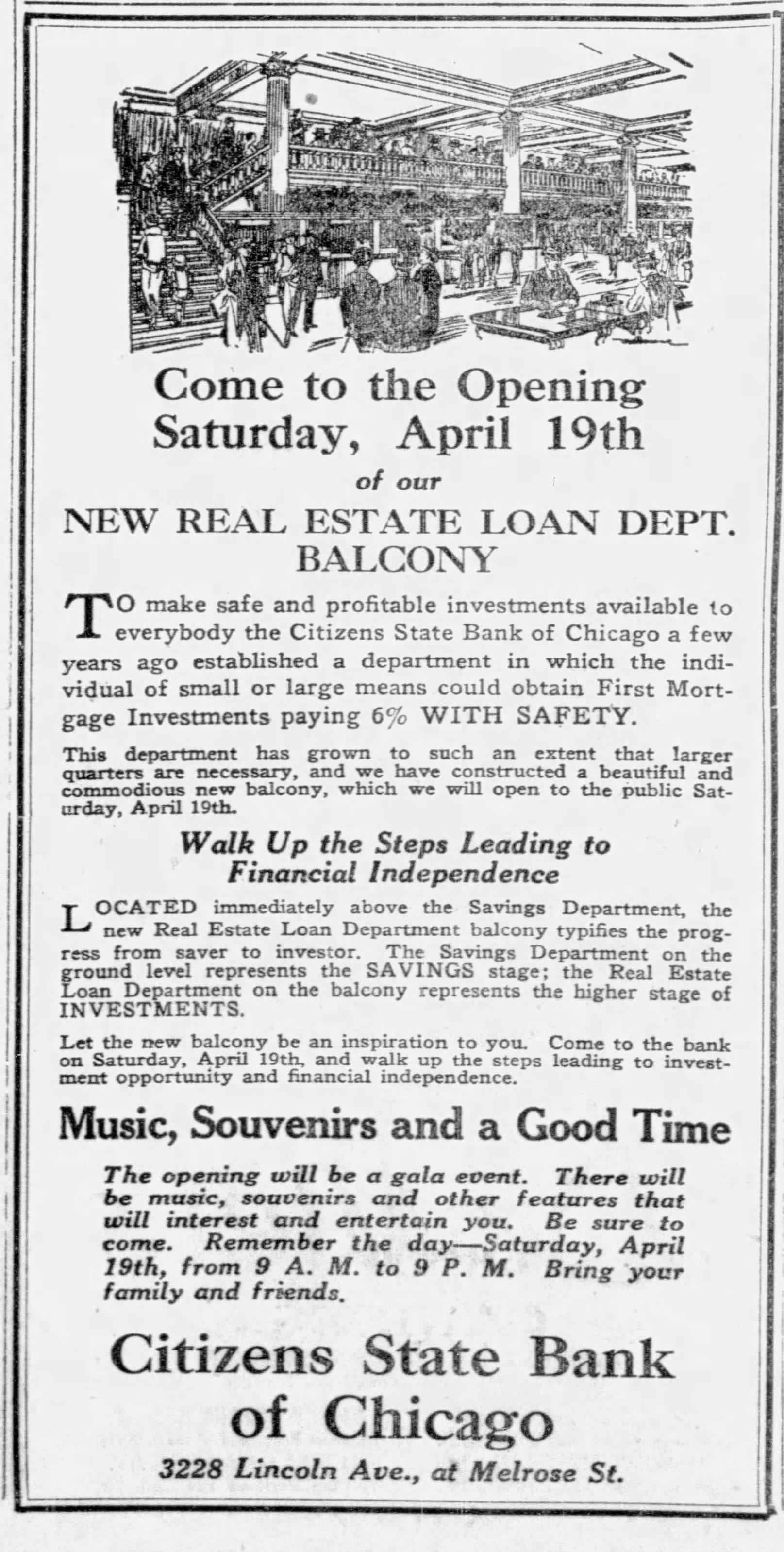
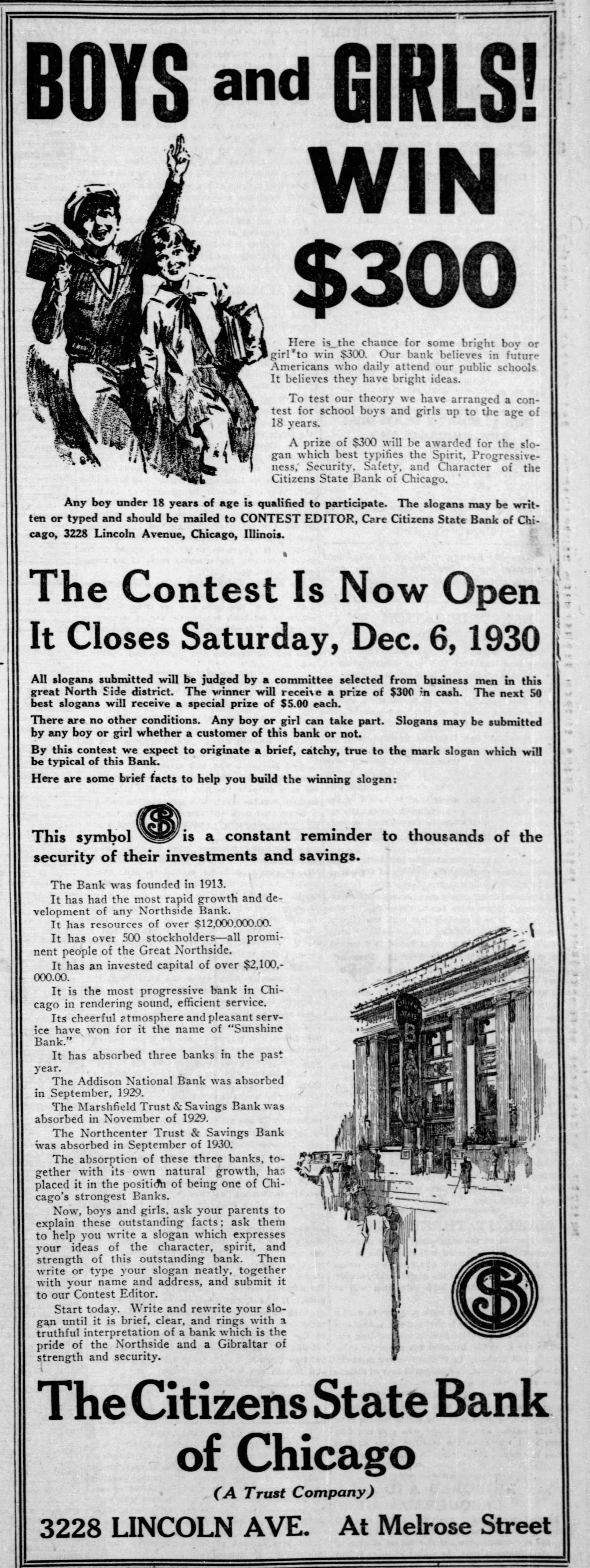
1921 blurb about the bank opening | 1924 ad announcing the new loan department | 1930 ad for a contest, detailing the history of the bank
Business owners being weird about parking...they've been doing it forever.

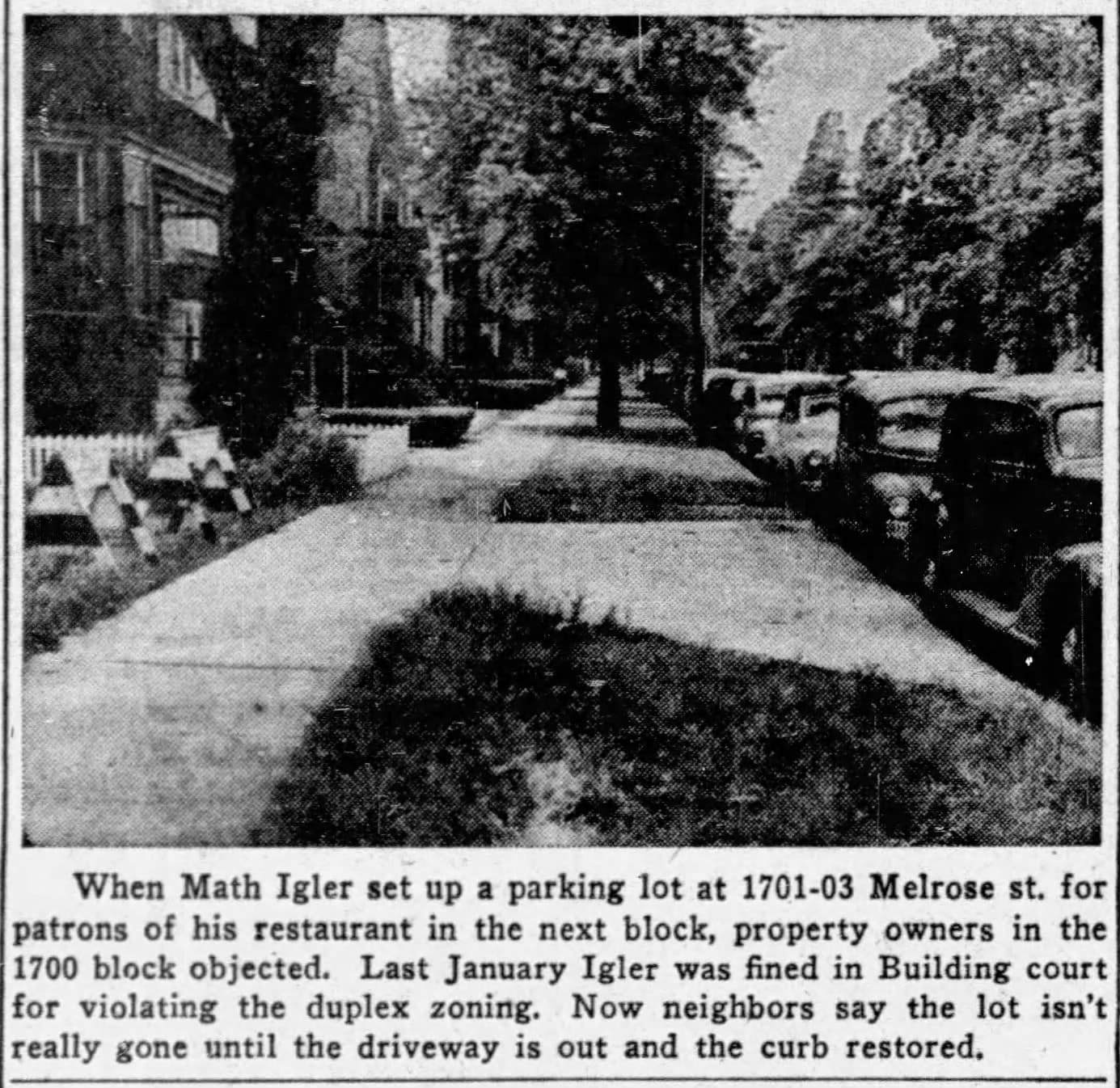

1949 and 1950 articles about Matthias Igler fighting with his neighbors over a parking lot
Given that this postcard was ordered in 1952, lining up with Math Igler selling the restaurant to his nephew, I imagine it was part of a marketing rush from the new owners.
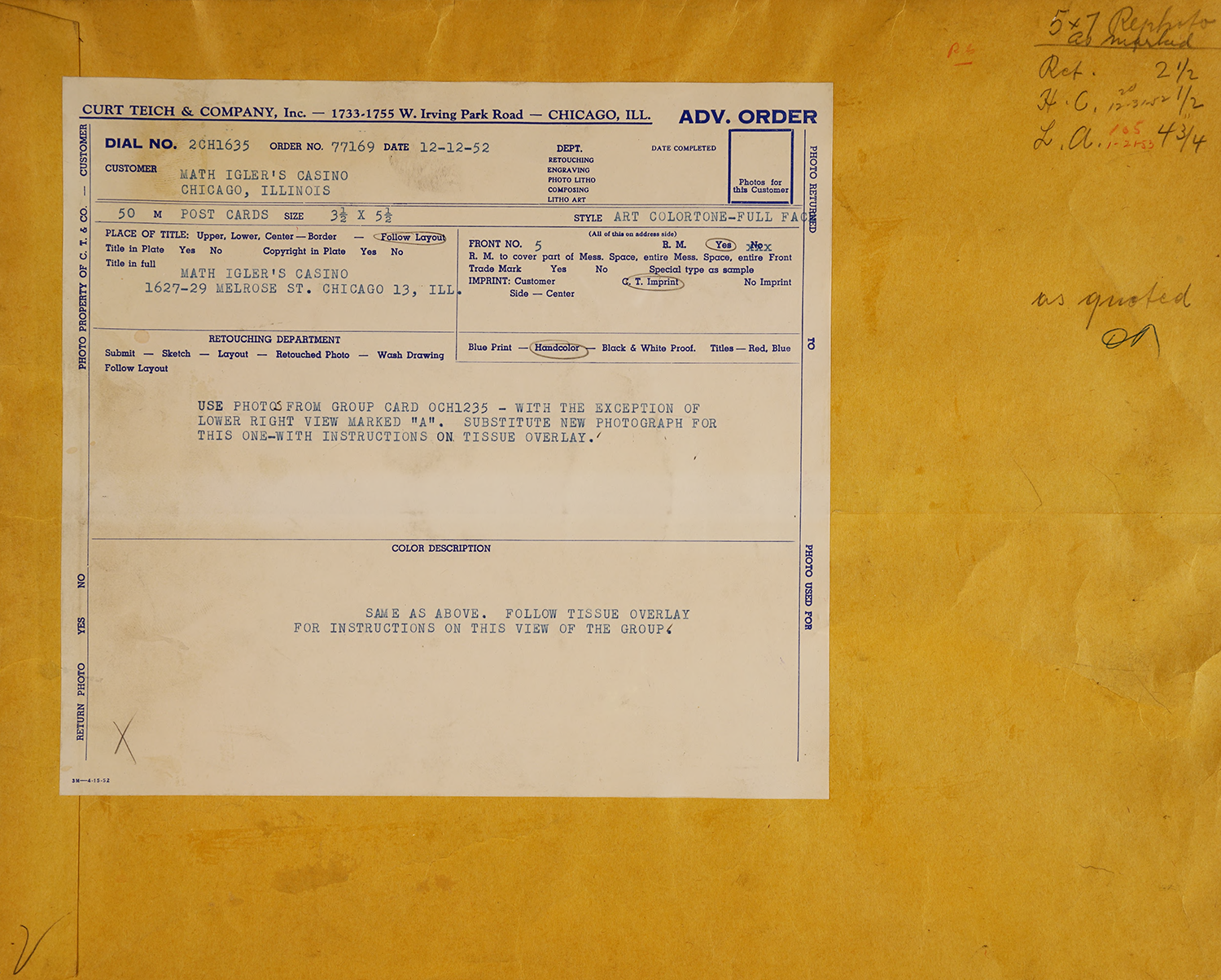
This is where I took the photo from.
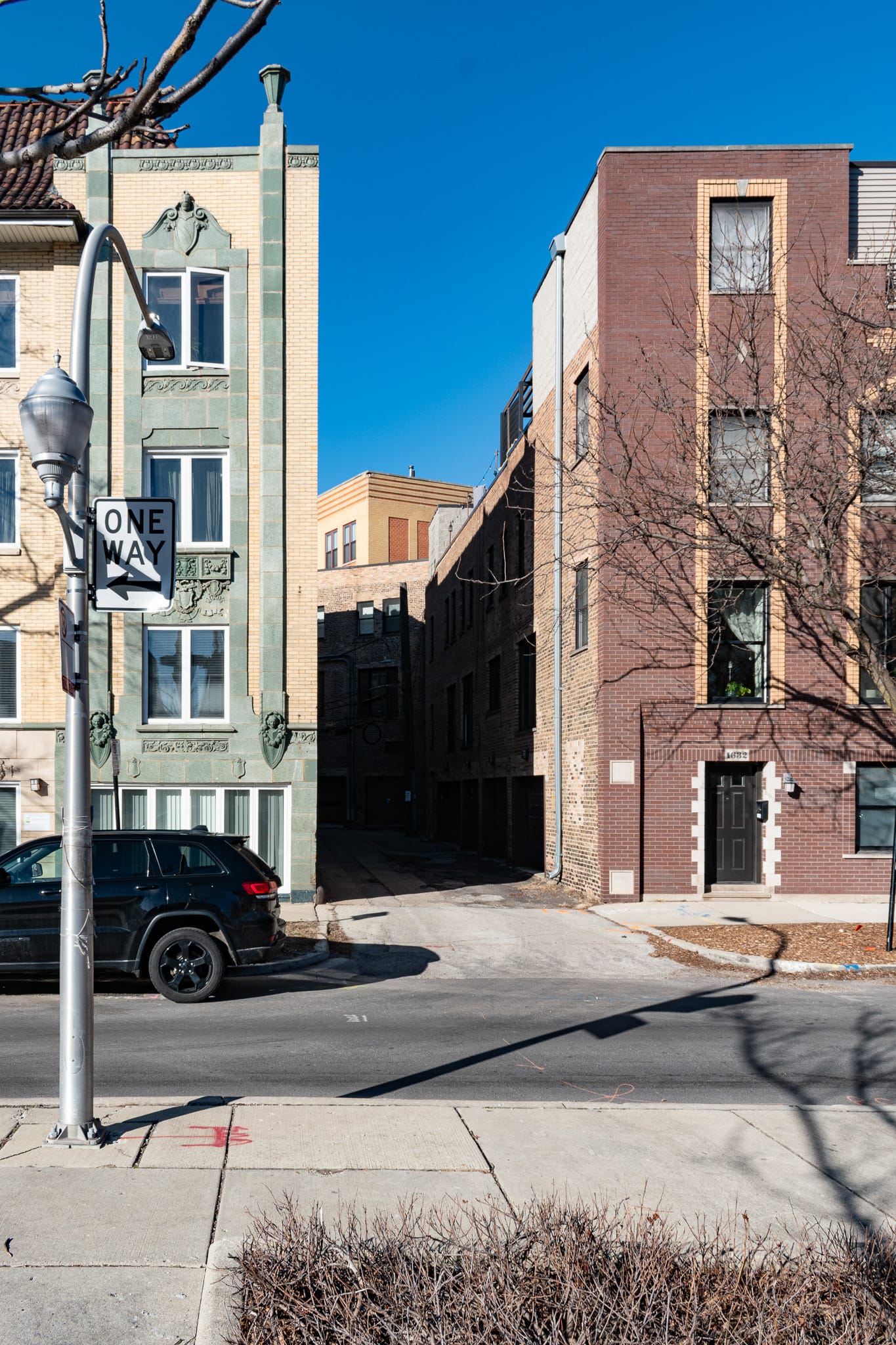
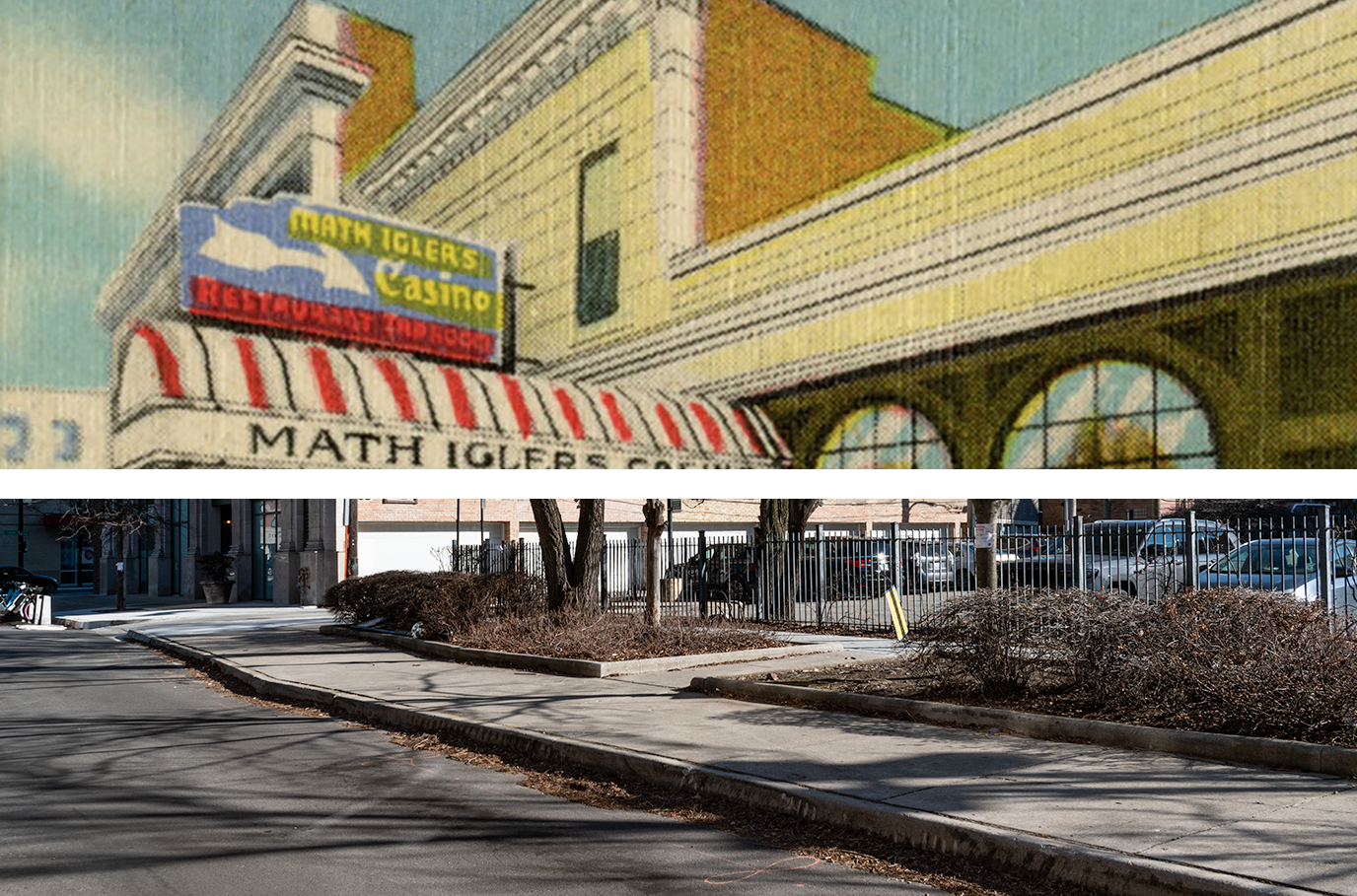
Member discussion: